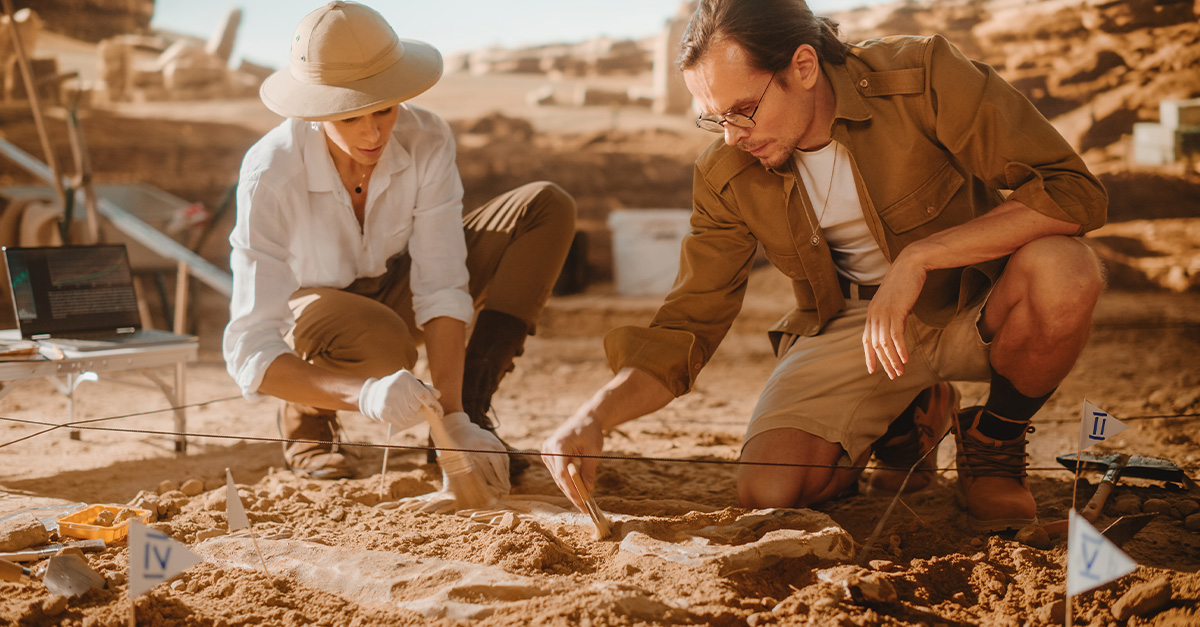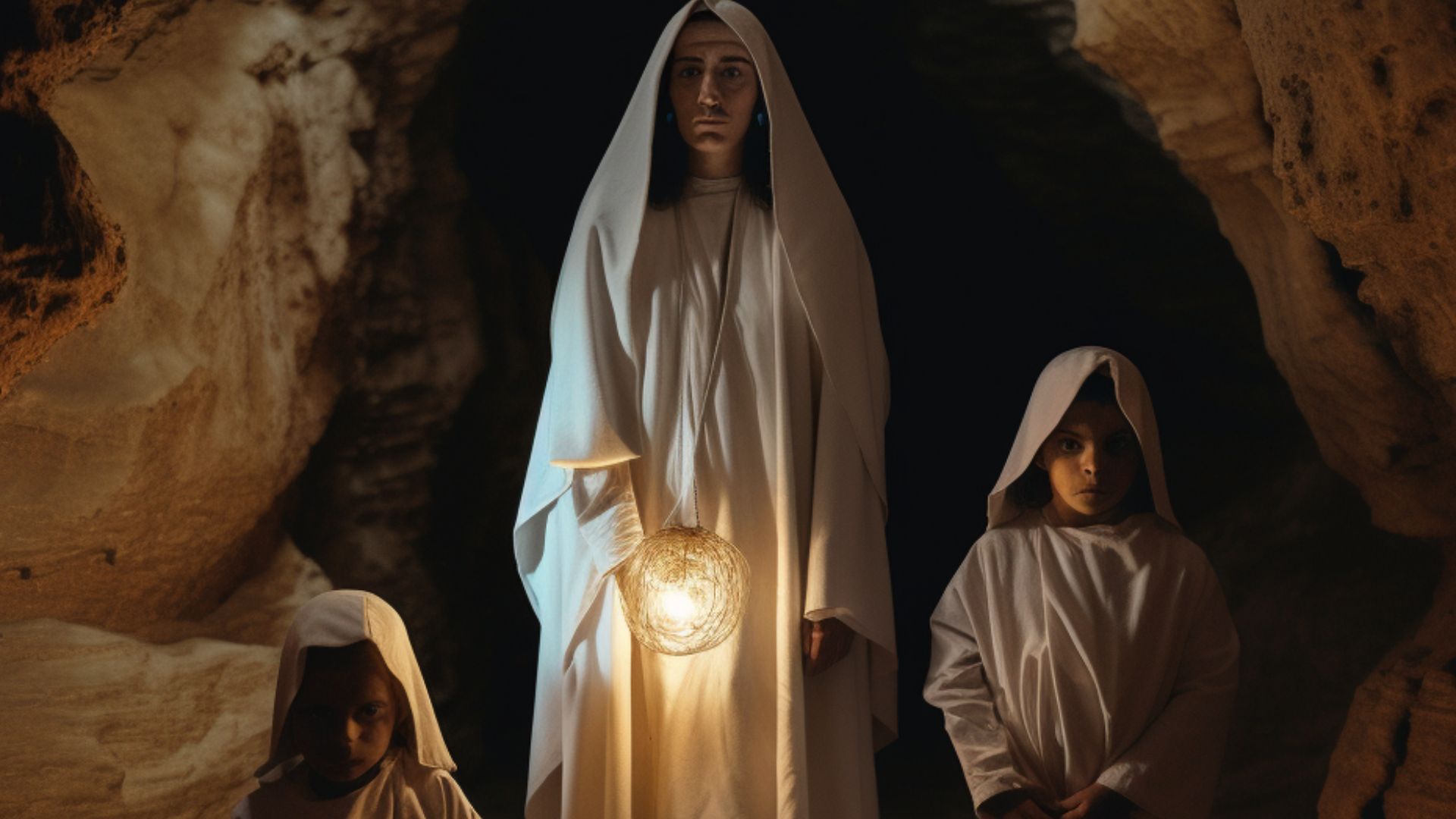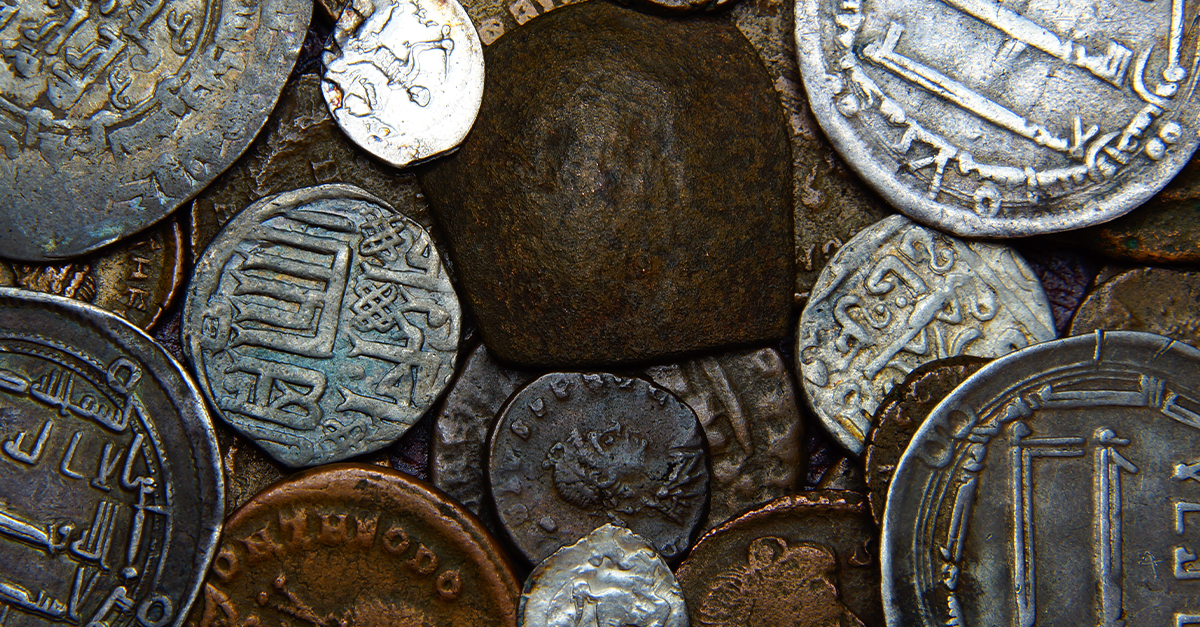A Handful Of Answers To Ancient Questions
The Hand of Irulegi was discovered in the Navarre region of Spain in 2021, near Pamplona. The incredible bronze cast takes the shape of a human hand with five extended fingers that contain written letters scratched into the palm of the hand, in the ancient Basque language. It is the oldest known written text from that part of the world and opens a Pandora's box of other questions about Ancient Europe.
Where Was The Discovery Made?
Archaeologists have been digging near the Castle of Irulegi since 2007. Sitting atop Mount Irulegi, the Castle of Irulegi is a ruined castle from the medieval period, situated strategically to give views of the mountains and valleys in the surrounding area. Built in 1484 by the Kingdom of Pamplona, the Basque castle is one of Spain's most intact ruins from the High Middle Ages.
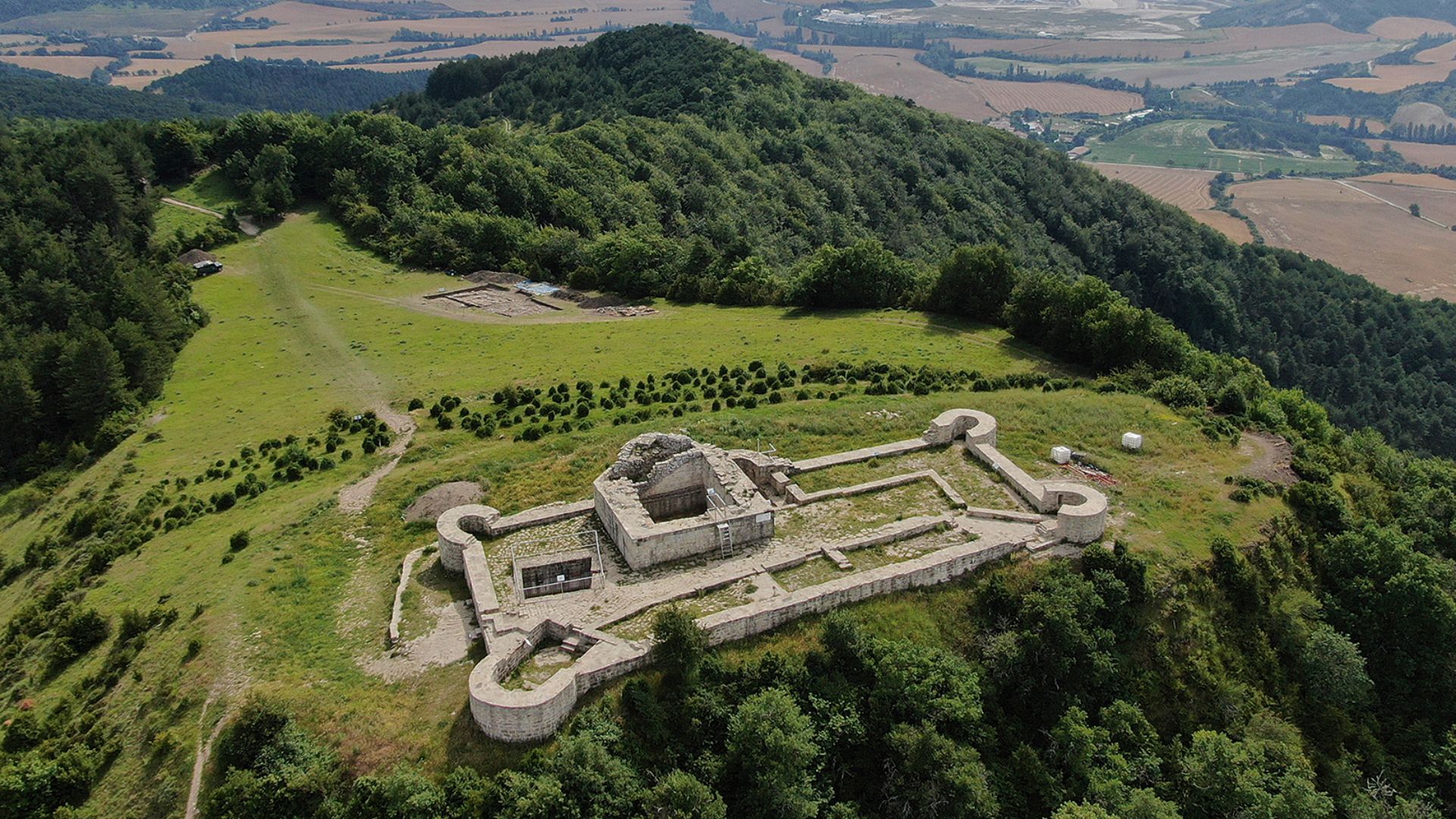 Nafarroako Gobernua | Gobierno de Navarra, CC BY-SA 3.0, Wikimedia Commons
Nafarroako Gobernua | Gobierno de Navarra, CC BY-SA 3.0, Wikimedia Commons
Pamplona: The Ancient City With A Bloody History
The Spanish city of Pamplona is the capital city of Navarre, an autonomous community in Spain, bordering the Basque regions of La Rioja and Aragorn. Pamplona is best-known for its annual festival, "The Running Of The Bulls," but that isn't the only blood shed in the city.
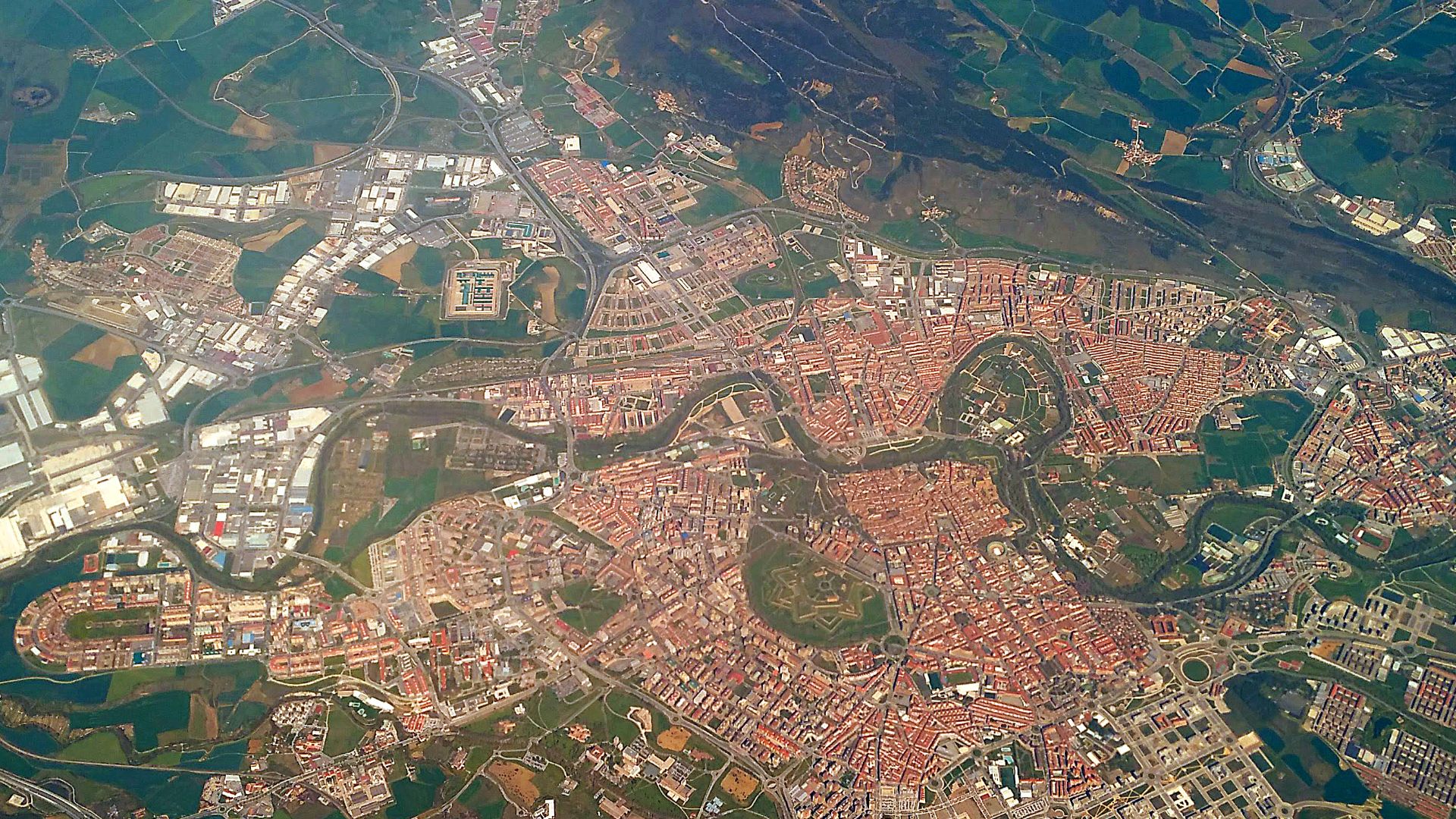 Theklan, CC BY-SA 4.0, Wikimedia Commons
Theklan, CC BY-SA 4.0, Wikimedia Commons
A Roman Encampment Was Built In Navarre
Navarre was also the site of a Roman encampment of General Gnaeus Pompeius Magnus, or "Pompey" for short. It became a fortress under Roman rule and saw much bloodshed during the Germanic invasions of the Middle Ages.
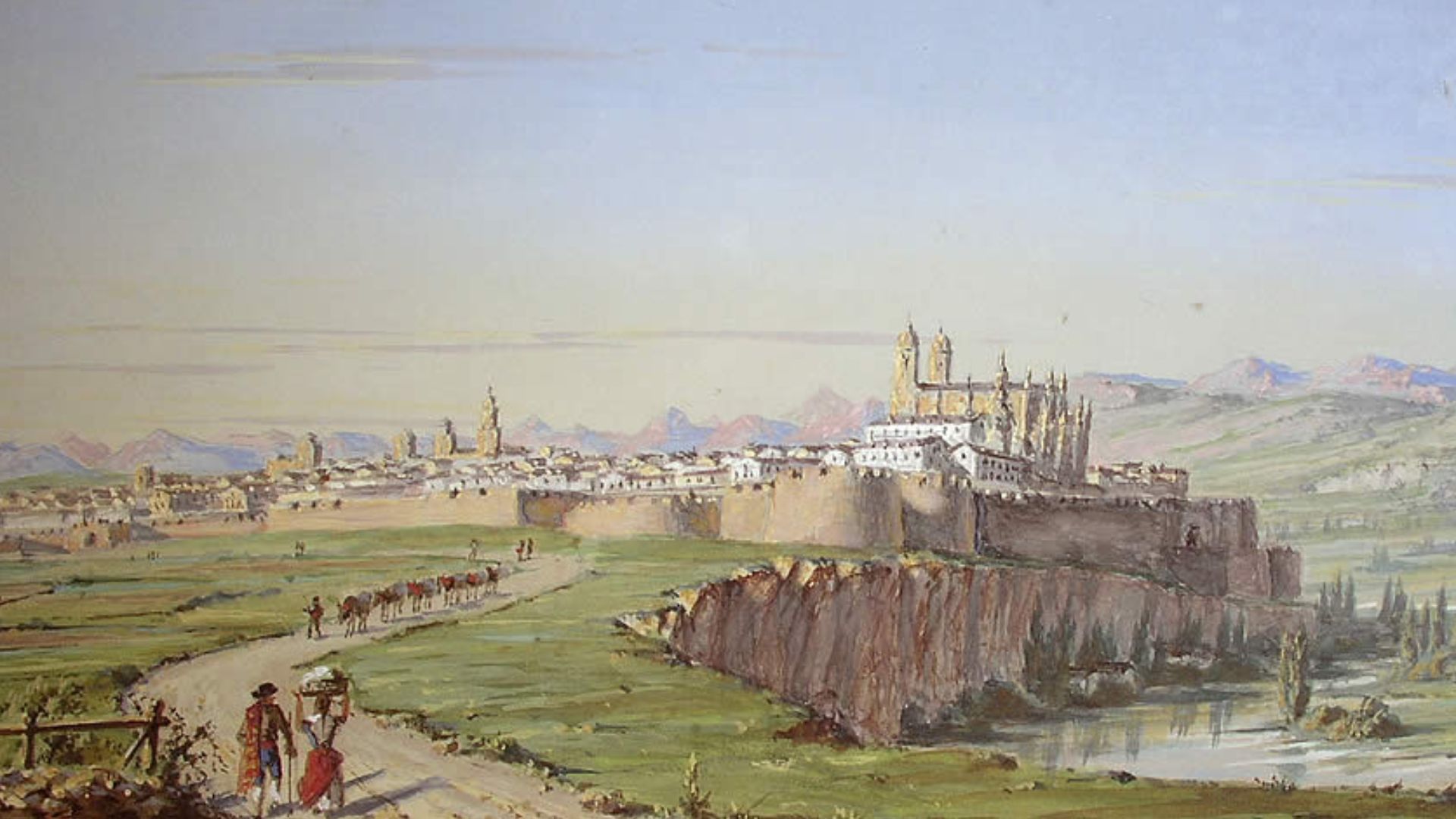 Didier Petit de Meurville, Wikimedia Commons
Didier Petit de Meurville, Wikimedia Commons
Why Does The Hand Of Irulegi Matter?
The bronze cast of a human hand holds huge significance for archaeologists, as the discovery completely changes what scientists previously thought about the Vascones, a pre-Roman tribe who inhabited the Navarre region, now known as the Basque Country. These people were thought to be illiterate, but the inscriptions on the palm of the hand say otherwise.
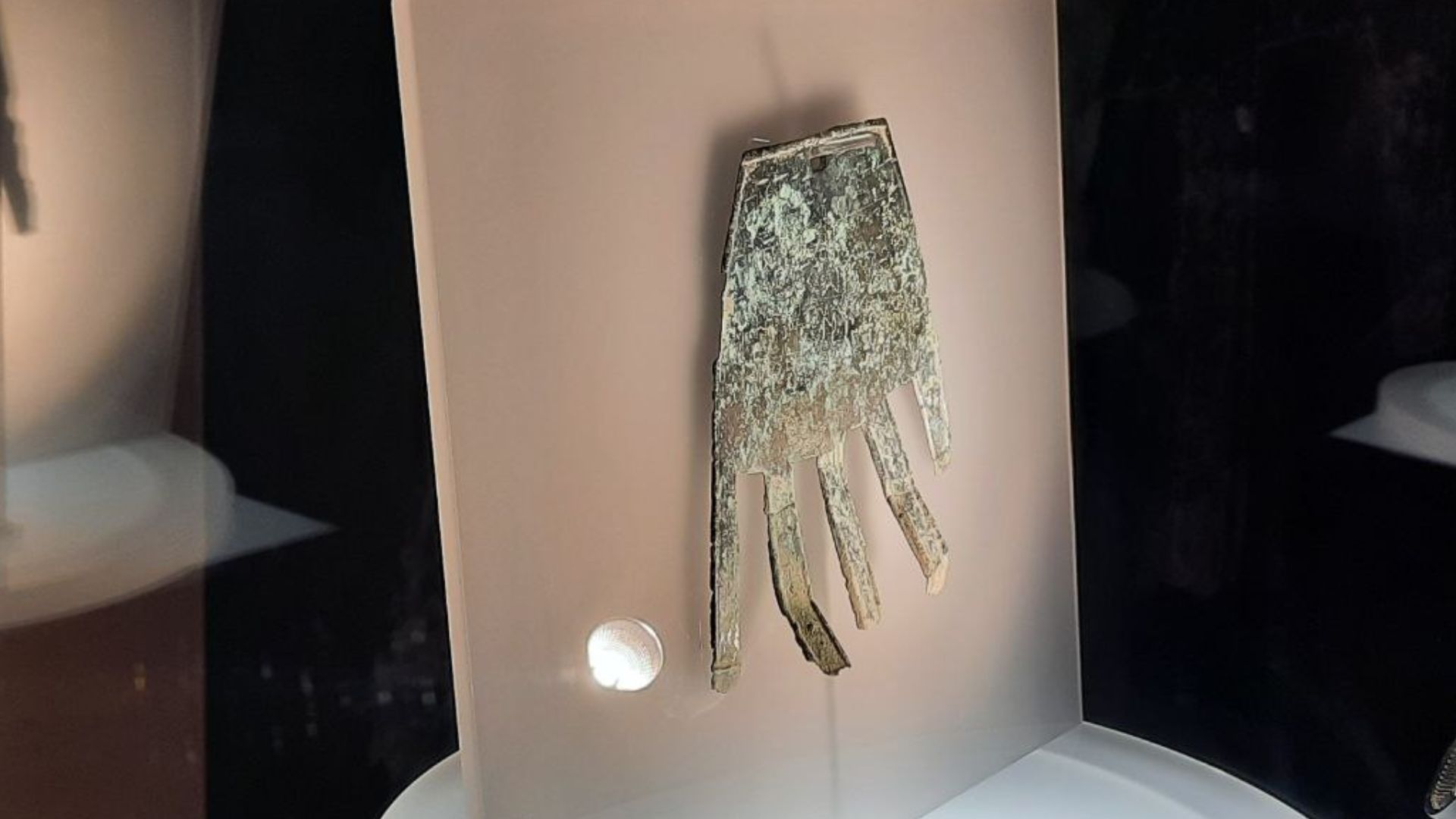 Asier Azpilicueta, CC BY-SA 4.0, Wikimedia Commons
Asier Azpilicueta, CC BY-SA 4.0, Wikimedia Commons
Who Were The Vascones?
The Vascones occupied an area from the Ebro River to the Pyrenees during the Roman era in the 1st and 2nd century BC, as the name appears multiple times in different texts written by Pliny the Elder and Ptolemy, among others. The Vascones inscriptions on the hand constitute the oldest document written in Basque.
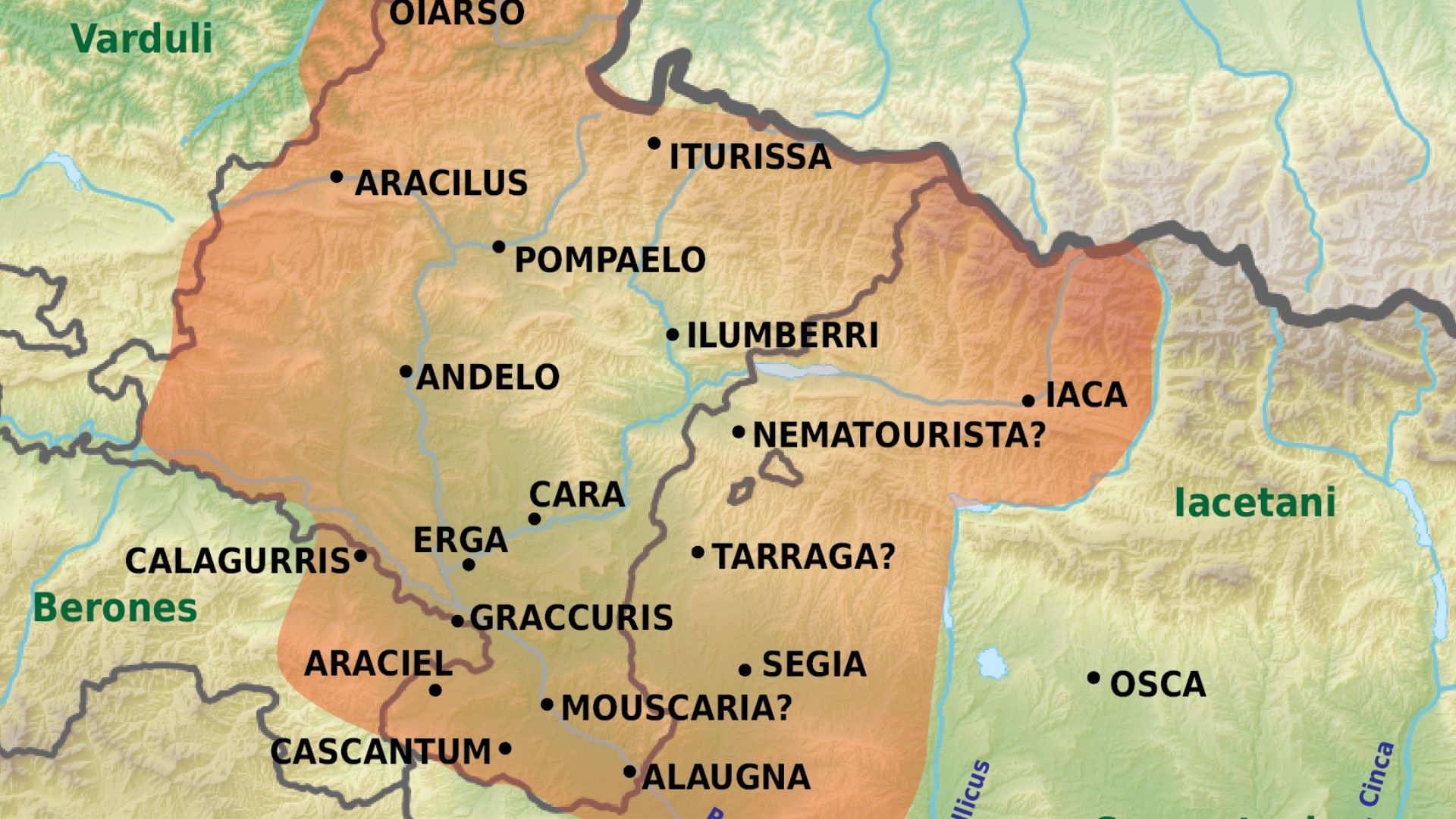 Sergio, CC BY 2.5, Wikimedia Commons
Sergio, CC BY 2.5, Wikimedia Commons
The Vascones Appear To Have Peacefully Assimilated Into Roman Order
Unlike many other Iberian cultures and peoples who fought the Romans tooth-and-nail, the Vascones appear to have passively agreed to be subsumed by the Roman Empire, but their history appears to show a territorial expansion between mid-2nd and 4th century, when the Vascones apparently occupied territory in northern Spain.
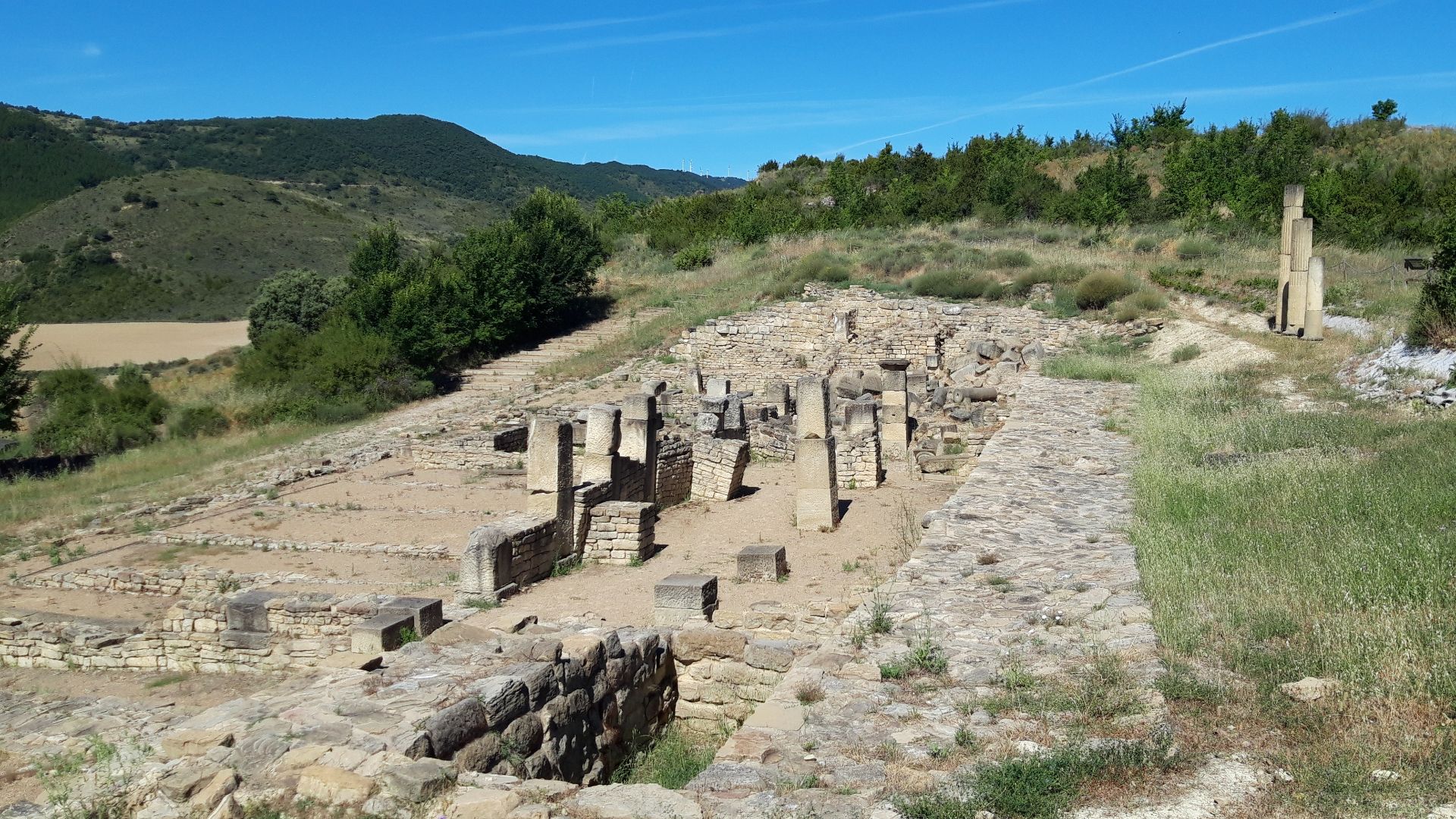 Suna no onna, CC BY-SA 4.0, Wikimedia Commons
Suna no onna, CC BY-SA 4.0, Wikimedia Commons
Fighting On The Side Of The Romans
Perhaps part of their peaceful assimilation into Roman rule was an agreement to fight for the Roman Army during this time, as the empire in northern Spain had come under attack from Germanic tribes. The Vascones established their independence under the invading Franks in the 8th century as the Duchy of Vasconia, which was incorporated into Southeastern France a century later.
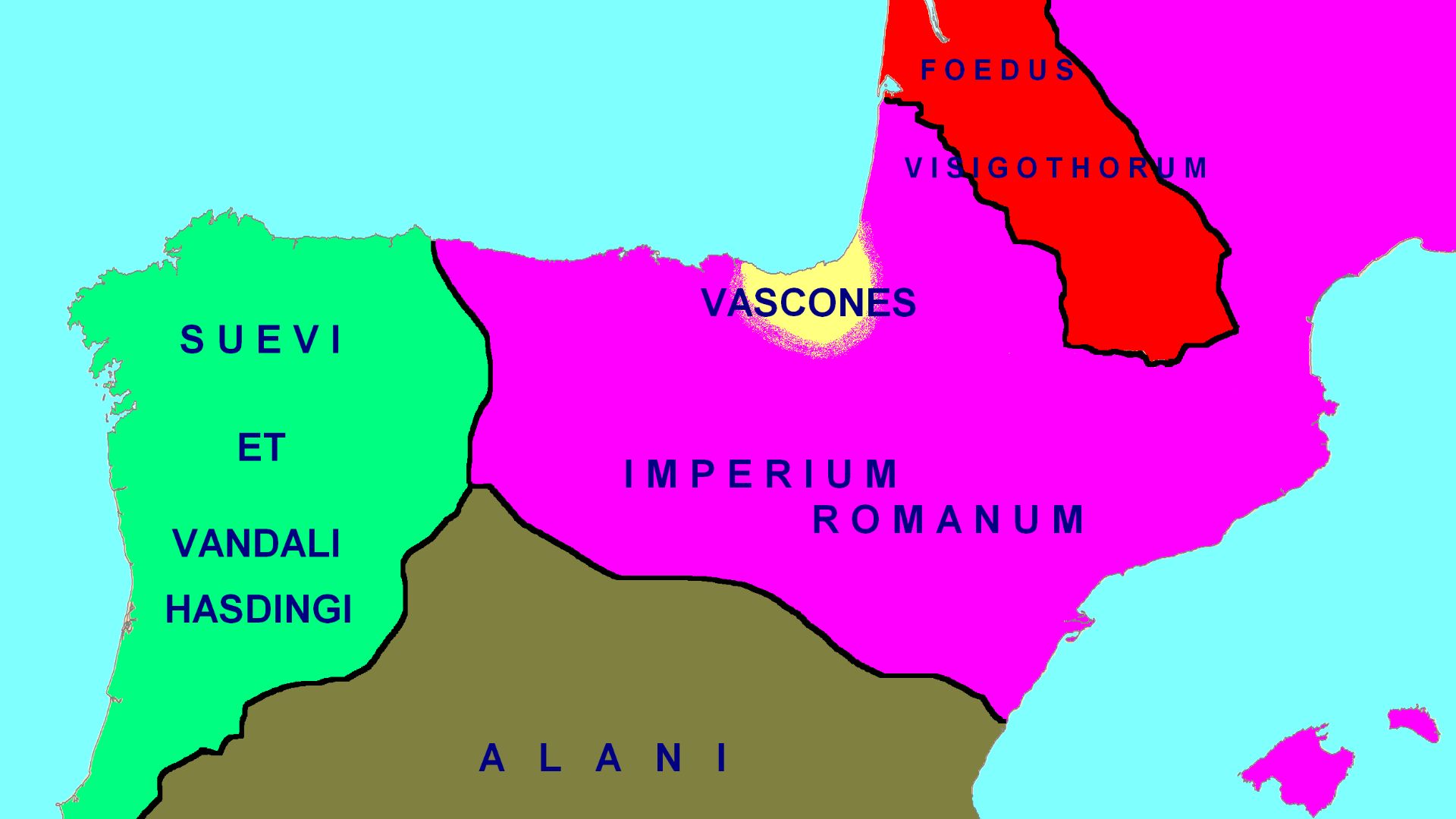 Medievalista, Wikimedia Commons
Medievalista, Wikimedia Commons
Writings Of The Vascones Predate Imperial Rule
Before the discovery of the Hand Of Irulegi, researchers had previously confined the Vascones to illiteracy—save for four words found on coins from the period of the Duchy of Vasconia. But these writings tell a different story: the Basques predecessors were very much literate.
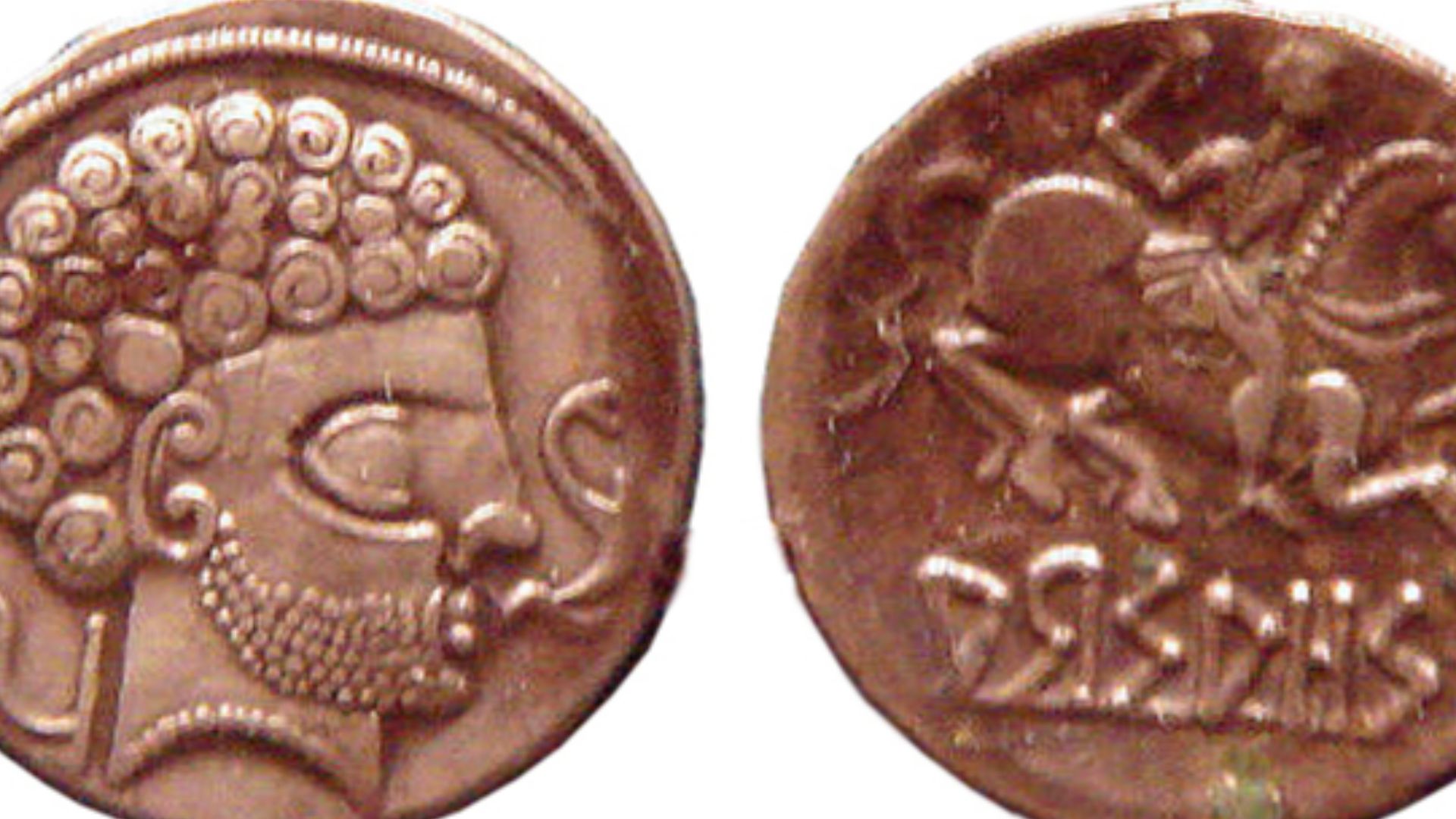 British Museum, CC BY-SA 3.0, Wikimedia Commons
British Museum, CC BY-SA 3.0, Wikimedia Commons
Could The Hand Be A Representation Of A Trophy Of War?
The shape and style of the design are believed to predate Spanish and other Iberian cultures, suggesting to researchers that the Vascones (or another earlier tribal party) carved the hand from a mold, possibly made from a human hand, taken as a trophy of victory after a war.
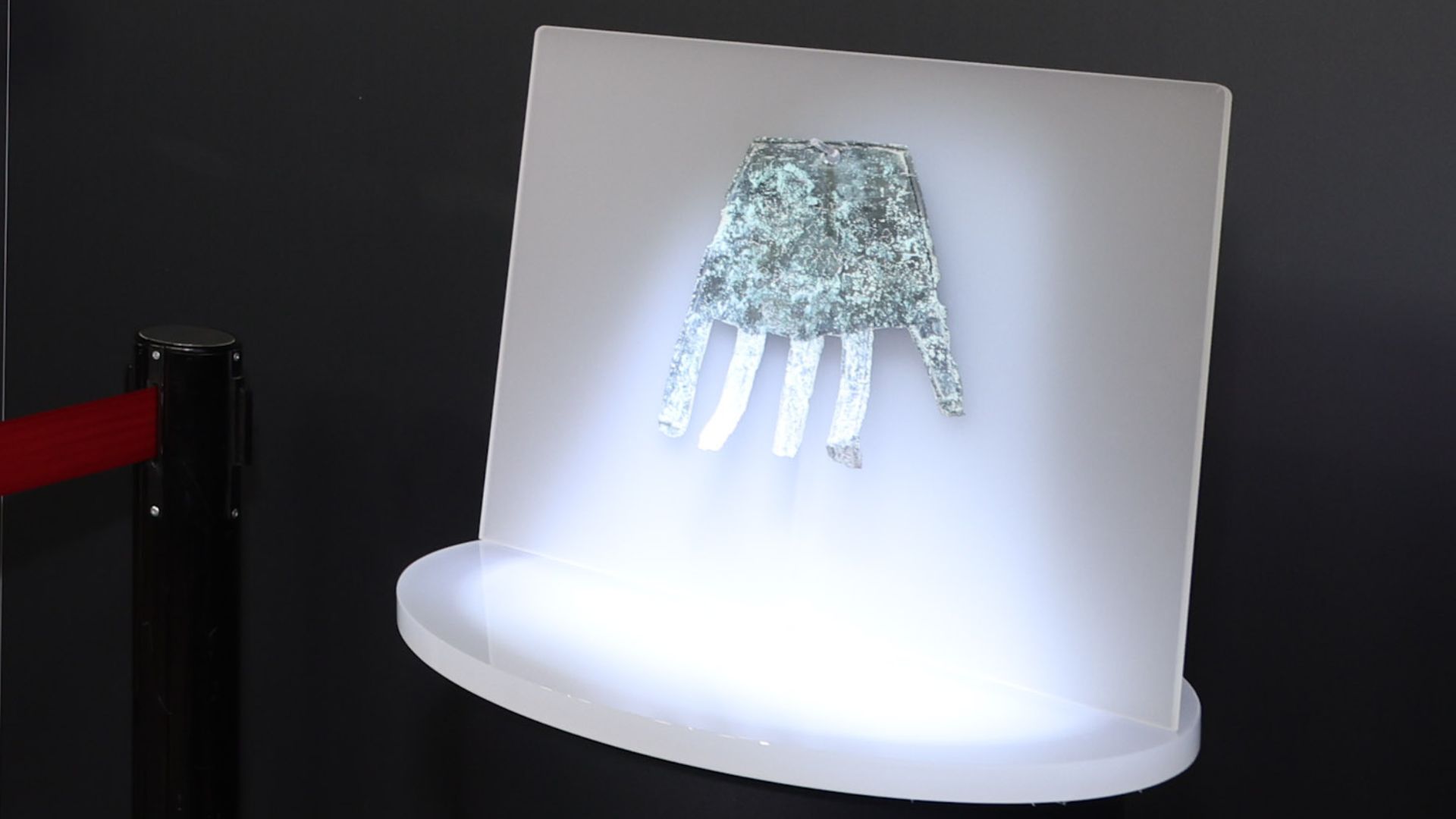 Government of Navarre | Gobierno de Navarra, CC BY-SA 3.0, Wikimedia Commons
Government of Navarre | Gobierno de Navarra, CC BY-SA 3.0, Wikimedia Commons
Survival Of The Hand Due To Burning
You might have thought that this ancient hand would have been destroyed when the village was sacked. But it's likely that the mud huts in which the Vascones would have lived (combined with wood or thatched walls) would have been burned down by the invading Germanic tribes, thus preserving the bronze casting, which may have been buried in mud during the collapse of the home.
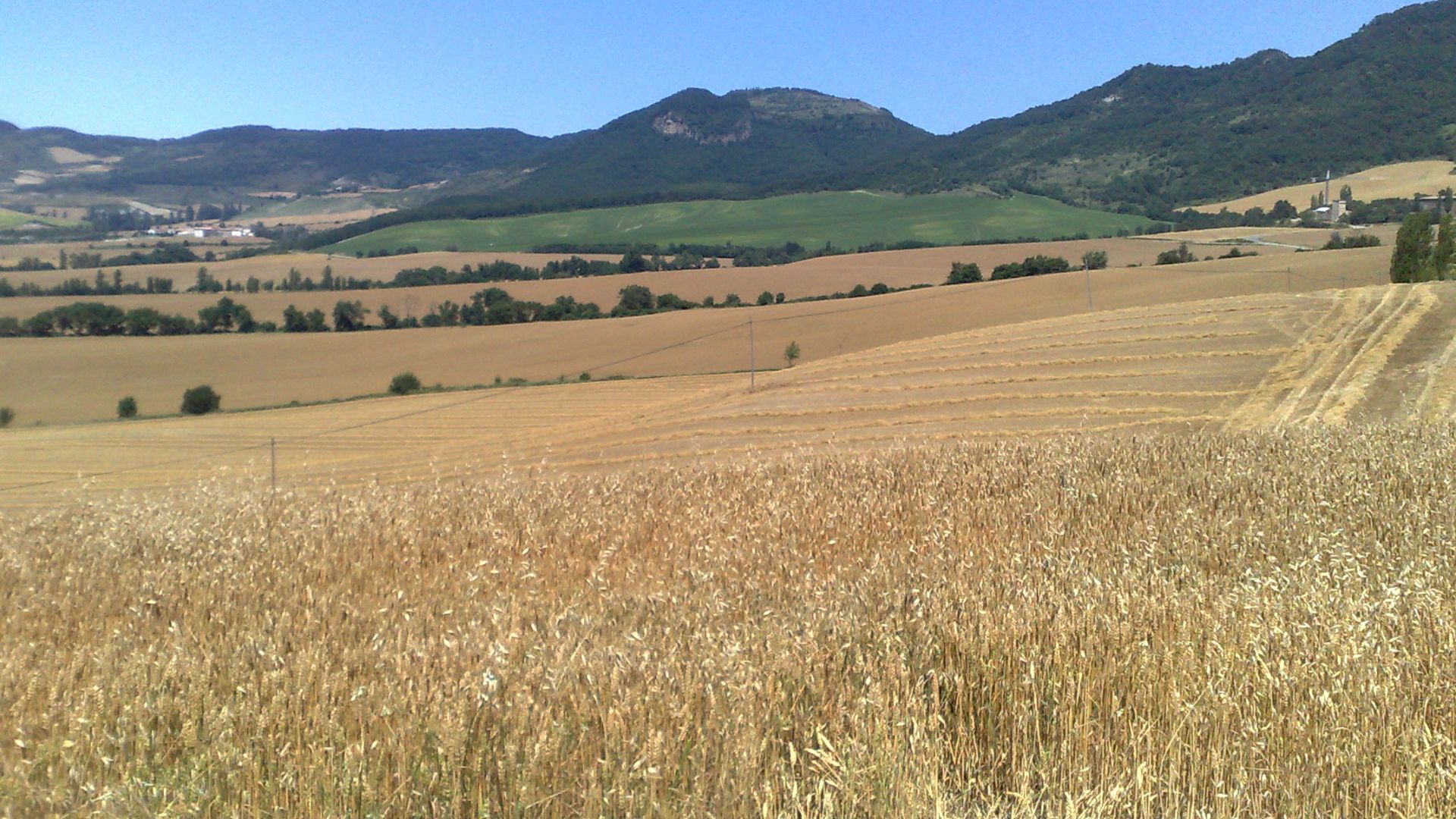 Adrar, CC BY-SA 3.0, Wikimedia Commons
Adrar, CC BY-SA 3.0, Wikimedia Commons
Cut From A Bronze Sheet
The Hand of Irulegi appears to have been cut from a bronze sheet, containing 53.9% tin, 40.87% copper, and 2.16% lead. It weighs 0.07 pounds and was found nearby to other metal objects, including coins from the first quarter of the 1st century. Interestingly, the adobe found within the site had become rust-stained, suggesting the presence of more metals like copper and tin within the soils.
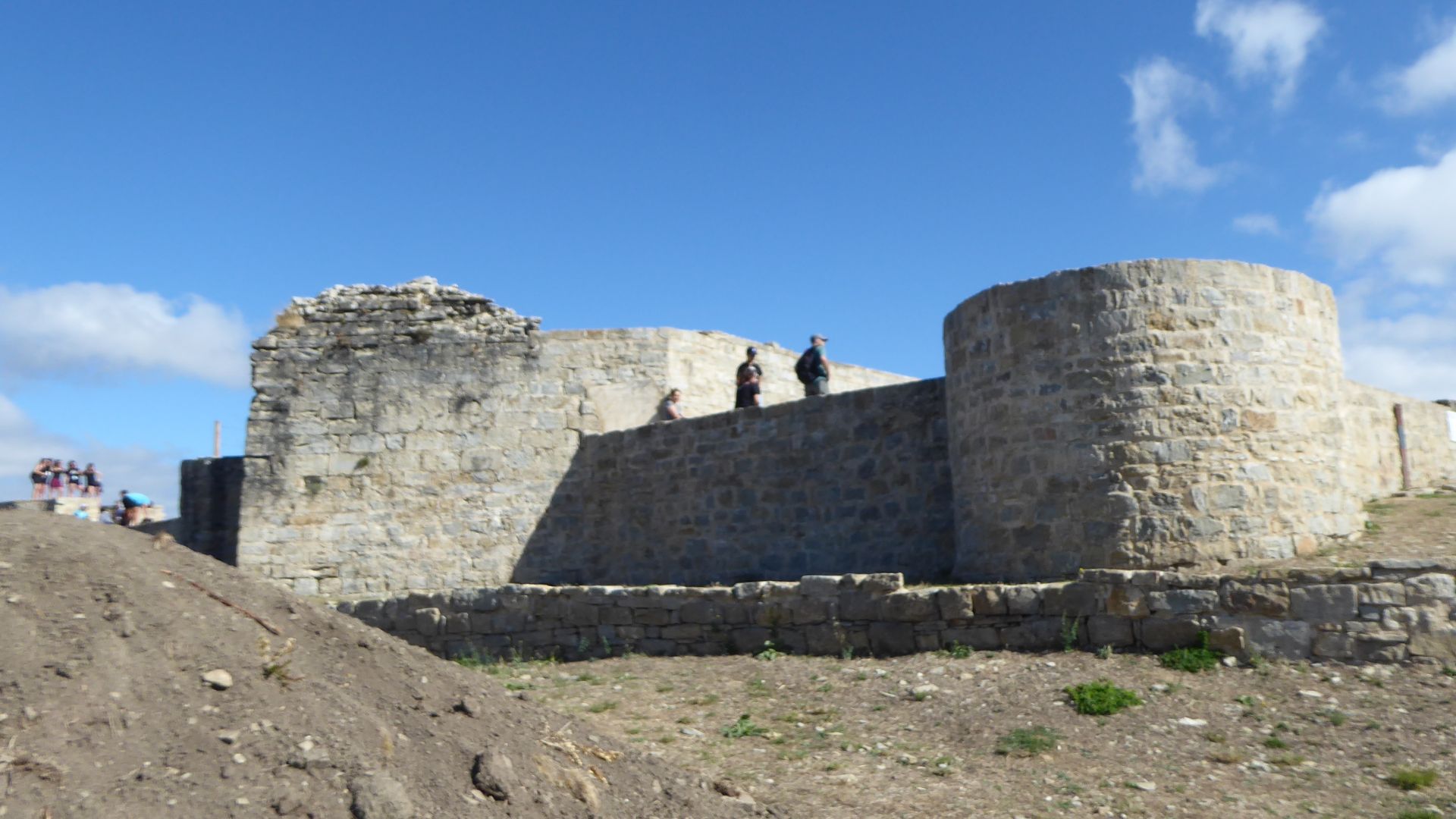 Patxi Txokarro, CC BY-SA 4.0, Wikimedia Commons
Patxi Txokarro, CC BY-SA 4.0, Wikimedia Commons
Possibly A Door-Knocker?
The Hand of Irulegi features a small round hole at the top, suggesting that it could have been hung over something, or something could have been threaded through the hole. The overall size of the cast—5.63 inches by 5.04 inches—suggests an appropriate size for a door-knocker.
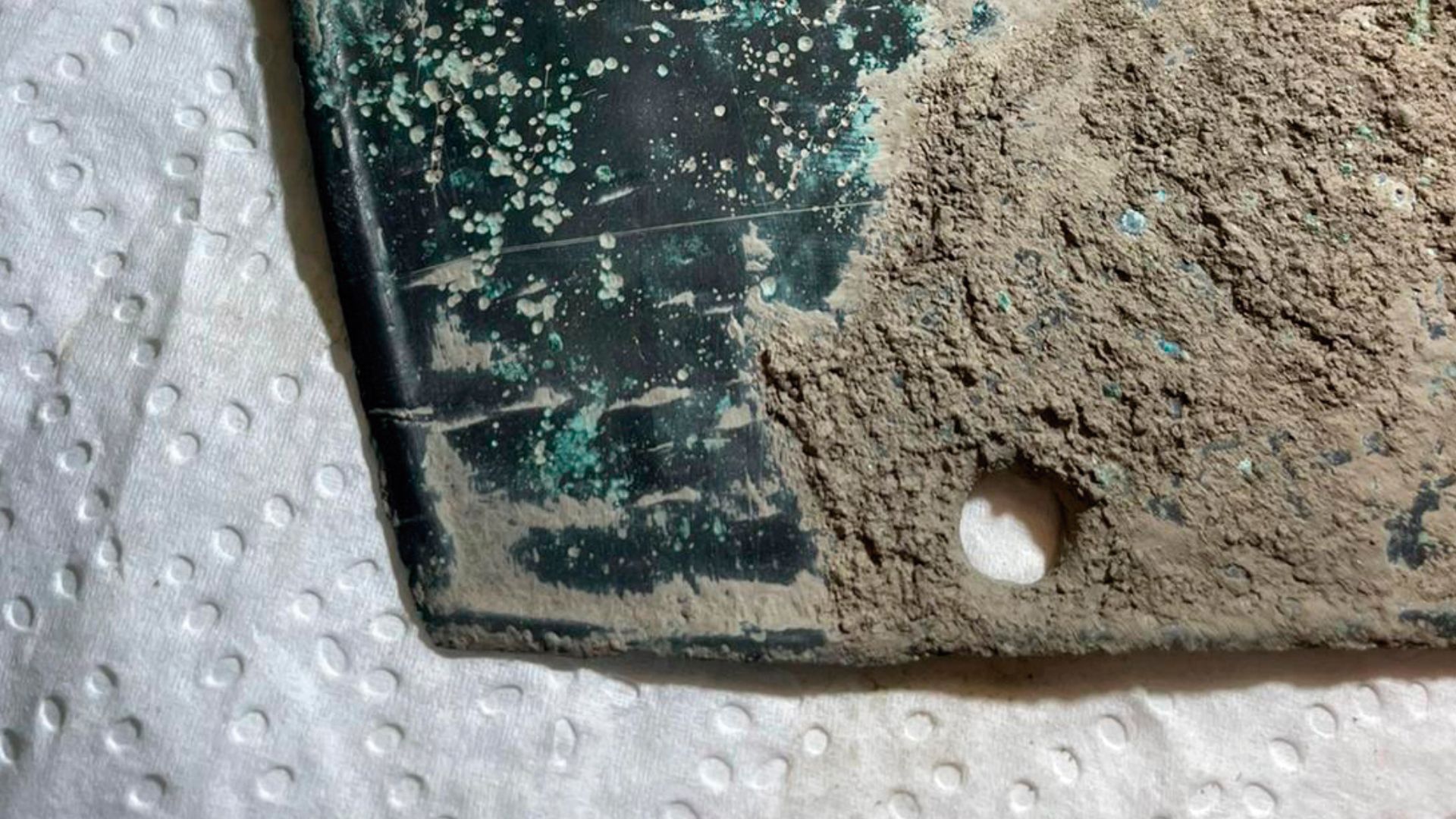 Nafarroako Gobernua | Gobierno de Navarra, CC BY-SA 3.0, Wikimedia Commons
Nafarroako Gobernua | Gobierno de Navarra, CC BY-SA 3.0, Wikimedia Commons
A Protective Object?
While we traditionally think of a "door knocker" as being a modern decorative object, it's likely that the Hand of Irulegi was used as a form of protection for the Vascones. Pre-Roman Vascones were thought to be pagans, thus the Hand of Irulegi could well have been hung upon a door or hook outside the home to ward off evil spirits or to prevent things from happening to the home.
An Offering To An Indigenous God Or Goddess?
Another possibility is that the Hand of Irulegi was placed there as an offering to an Indigenous god or goddess that the Vascones believed in. This could have been Ortzi (the Sun god), Sugaar (God of storm and thunder), or Mari (the earth goddess), as these were significant deities to the Vascones before they adopted Roman Christianity.
Five Words Are Found
One year after the discovery of the hand was made, scientists were able to reveal that five words were inscribed on the hand, including two nouns. These words were made using two ancient methods of writing: sgraffito and stippling.
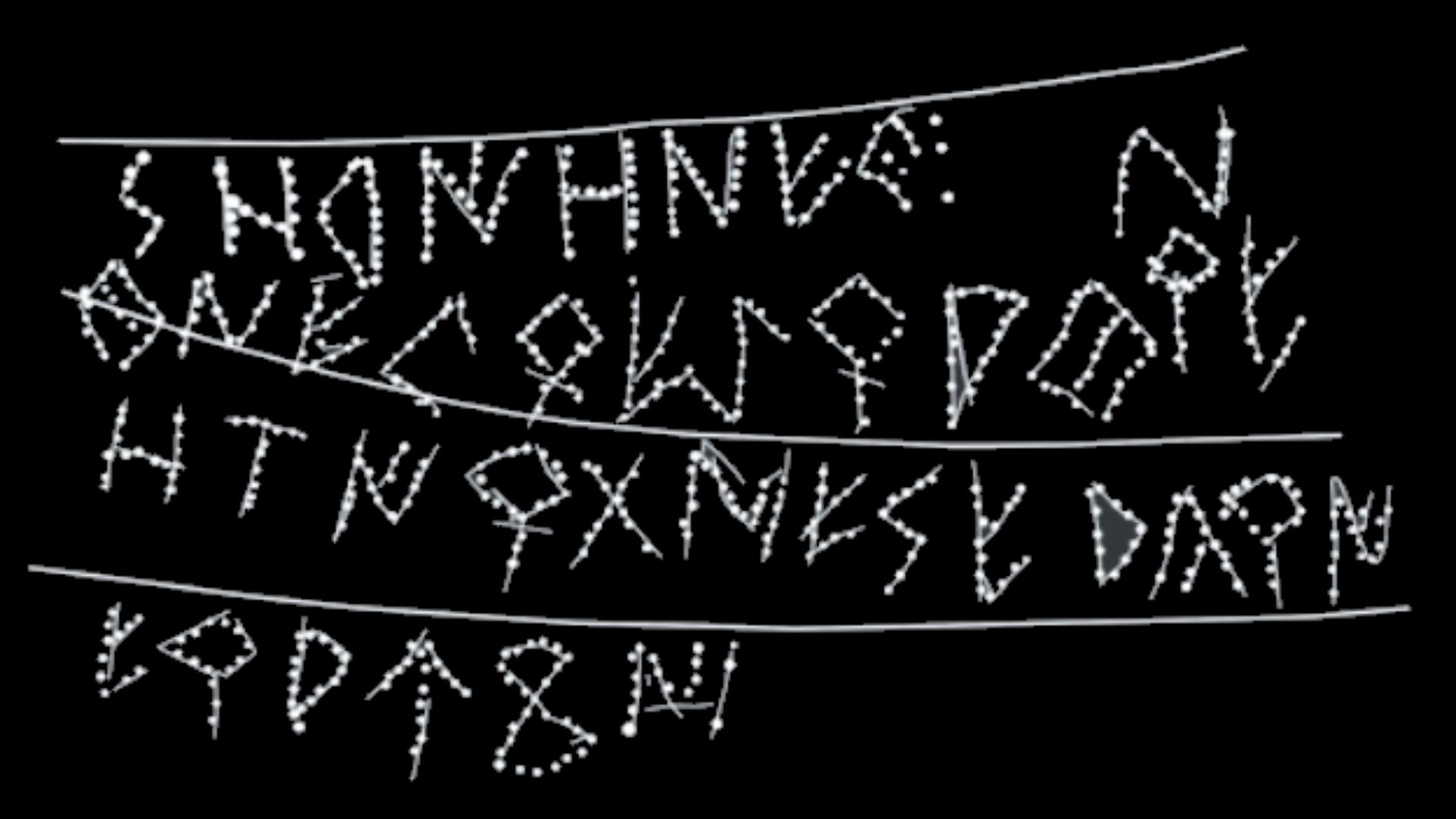 ARGIA, CC BY-SA 4.0, Wikimedia CommonsWhat Is Sgraffito?
ARGIA, CC BY-SA 4.0, Wikimedia CommonsWhat Is Sgraffito?
Long before we had pens and pencils, our ancestors used "sgraffito" (Italian for "scratching") to mark words and symbols onto hard surfaces, typically on a layer of contrasting color. Not exclusively used in writings, sgraffito is also an artistic technique that was also used in pottery and dates back as far as early Islam.
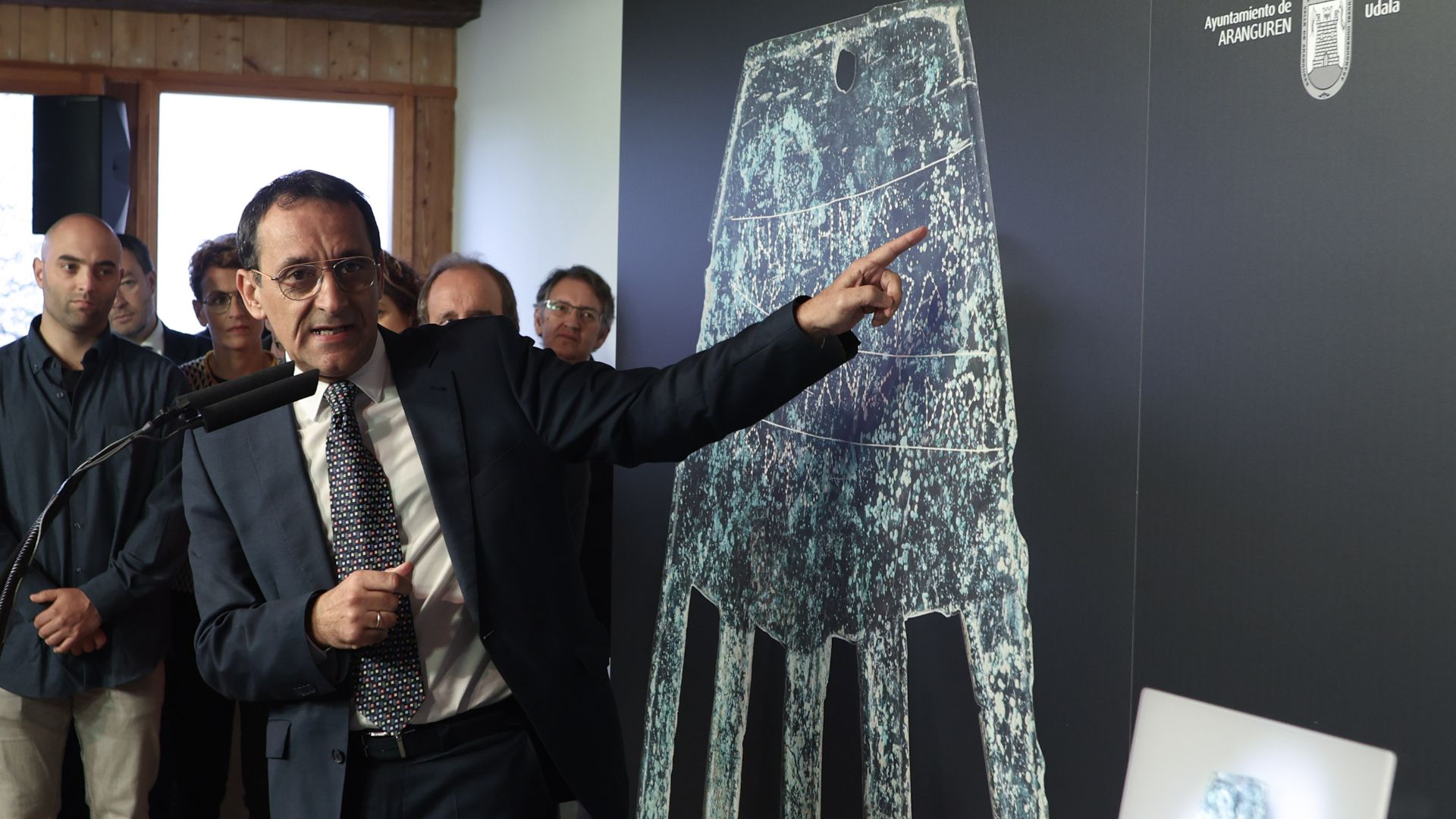 Nafarroako Gobernua | Gobierno de Navarra, Wikimedia Commons
Nafarroako Gobernua | Gobierno de Navarra, Wikimedia Commons
What Is Stippling?
Stippling is the creation of a pattern using small dots. As an artistic form, stippling has its origins in the 16th century—although researchers believe that the stippled dots found in the Hand of Irulegi were used to denote spaces between words.
 Nafarroako Gobernua | Gobierno de Navarra, Wikimedia Commons
Nafarroako Gobernua | Gobierno de Navarra, Wikimedia Commons
The Translation Of The Words
The words inscribed on the Hand of Irulegi are: sorioneke, kunekeřekiřateŕe//n, oTiŕtan, eseakaŕi, and eŕaukon·. While researchers aren't done translating these words from Vascones into English, the first word is distinguished as "zorioneku", which means "of good fortune" in modern-day Basque.
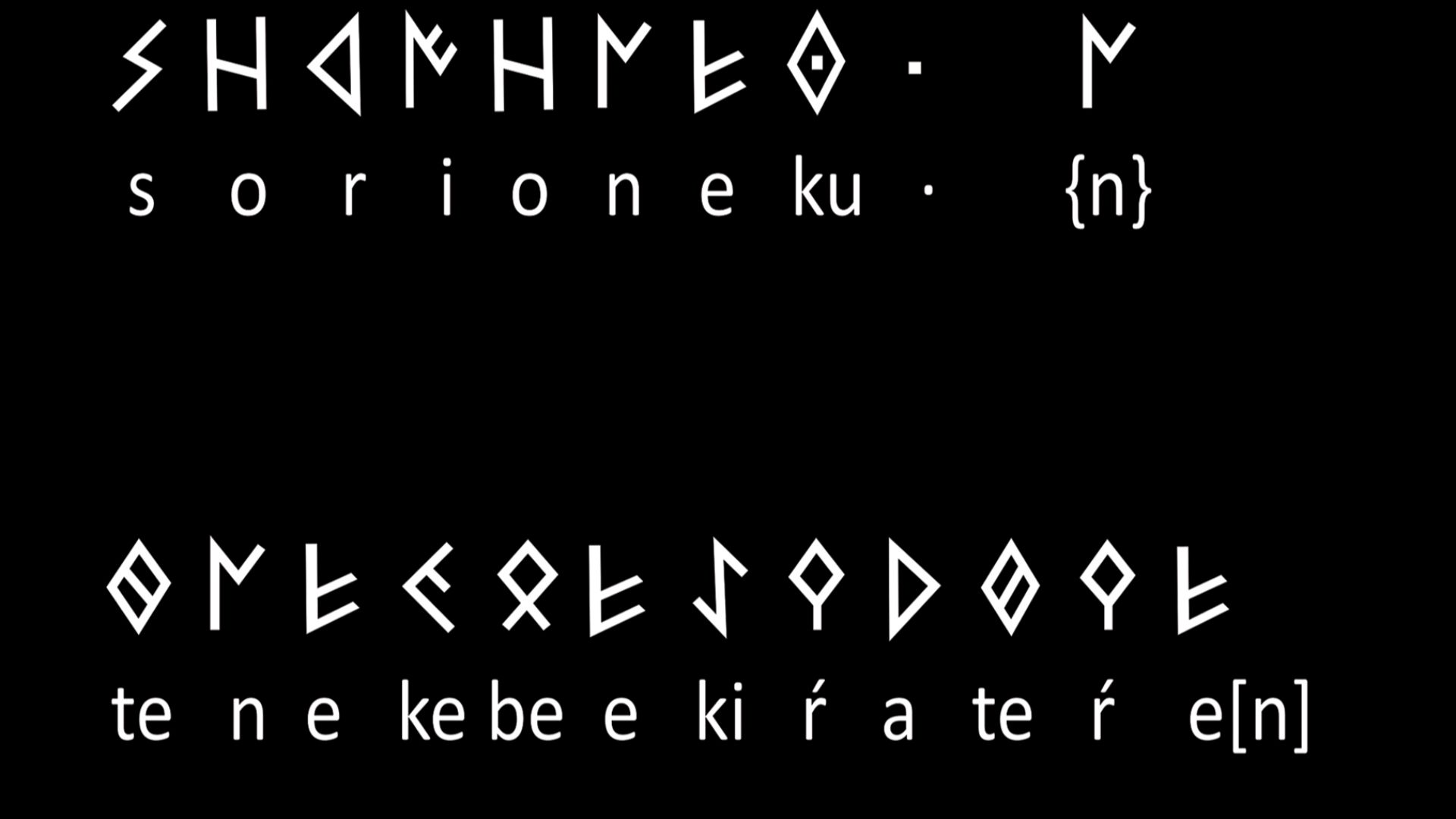 Nafarroako Gobernua | Gobierno de Navarra, CC BY-SA 3.0, Wikimedia Commons
Nafarroako Gobernua | Gobierno de Navarra, CC BY-SA 3.0, Wikimedia Commons
The Longer Words Remain A Mystery
The final word in the sequence, "eraukon", translates to "He had" in English from modern Basque. The other letters remain a mystery, but the one with a "T" in it has only been found in areas where Vasconic was the language du jour.
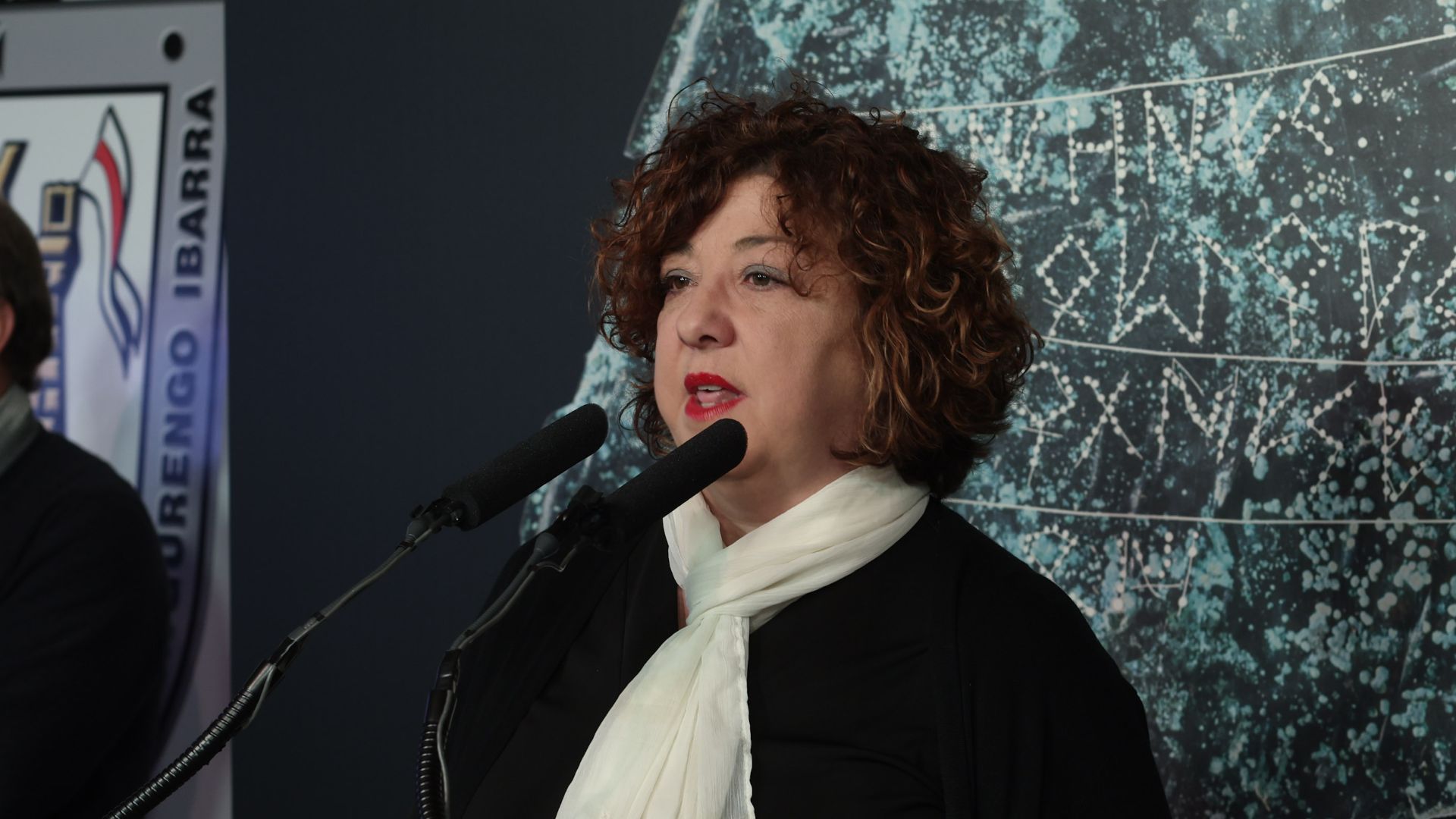 Nafarroako Gobernua | Gobierno de Navarra, Wikimedia Commons
Nafarroako Gobernua | Gobierno de Navarra, Wikimedia Commons
The Hand Was Left Buried And Abandoned
Despite discovering the Hand of Irulegi in 2021, researchers at the University of the Basque Country waited more than a year to announce the discovery, taking their time to clean the object, which was found buried and abandoned in a village that dated back to the Sertorian Wars of the 1st century BC.
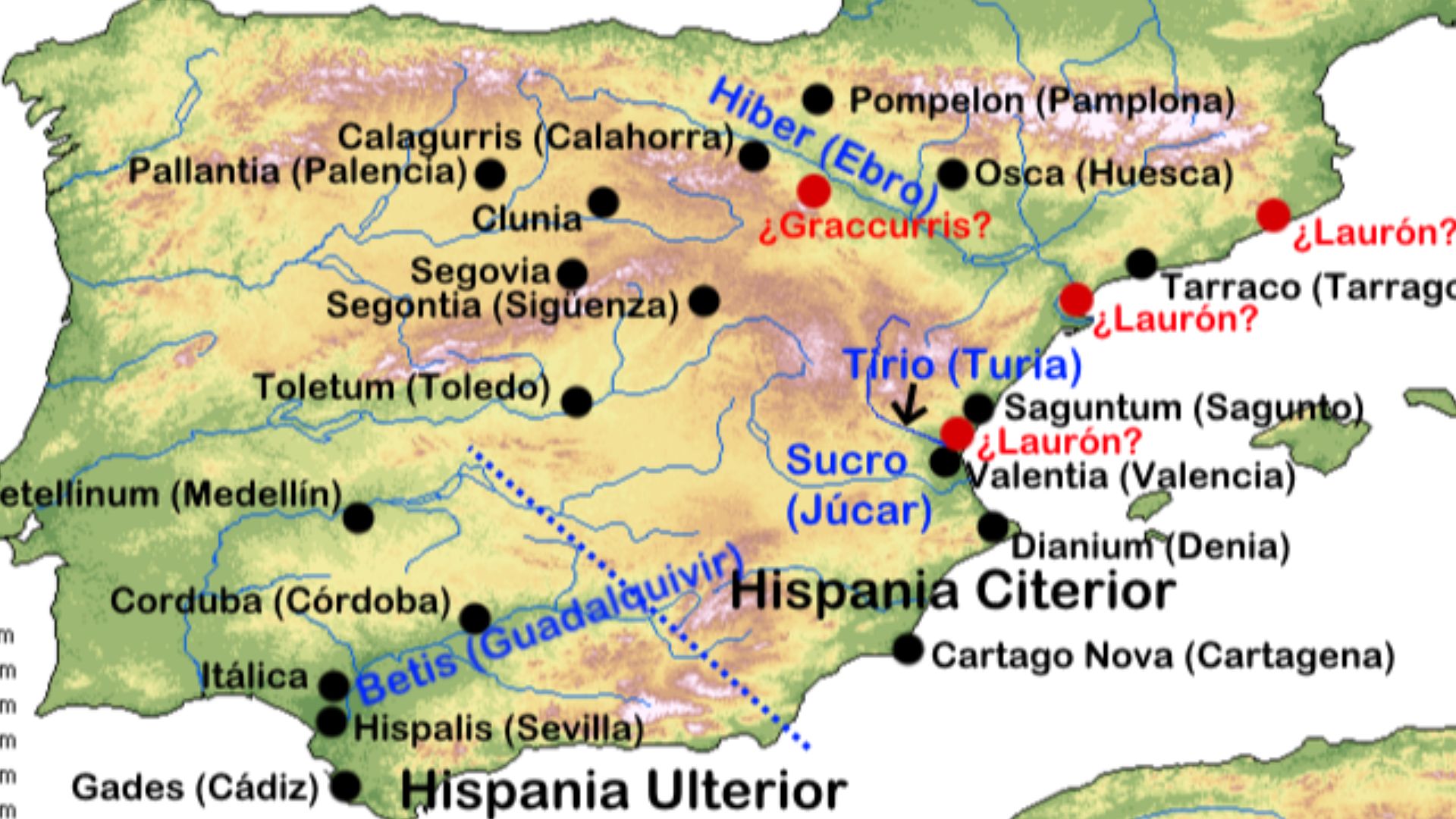 BlaGalaxi, CC BY-SA 4.0, Wikimedia Commons
BlaGalaxi, CC BY-SA 4.0, Wikimedia Commons
The Sertorian Wars
One of the first Roman civil wars of the first century, the Sertorian War took place between 80 BC and 72 BC in the area now known as Basque Country. This war pitted rival factions against each other: Quintus Sertorius and the Roman Senate, who thought Sertorius an outlaw. The Hand of Irulegi was recovered in a village that was thought to be plundered by Sertorius' soldiers.
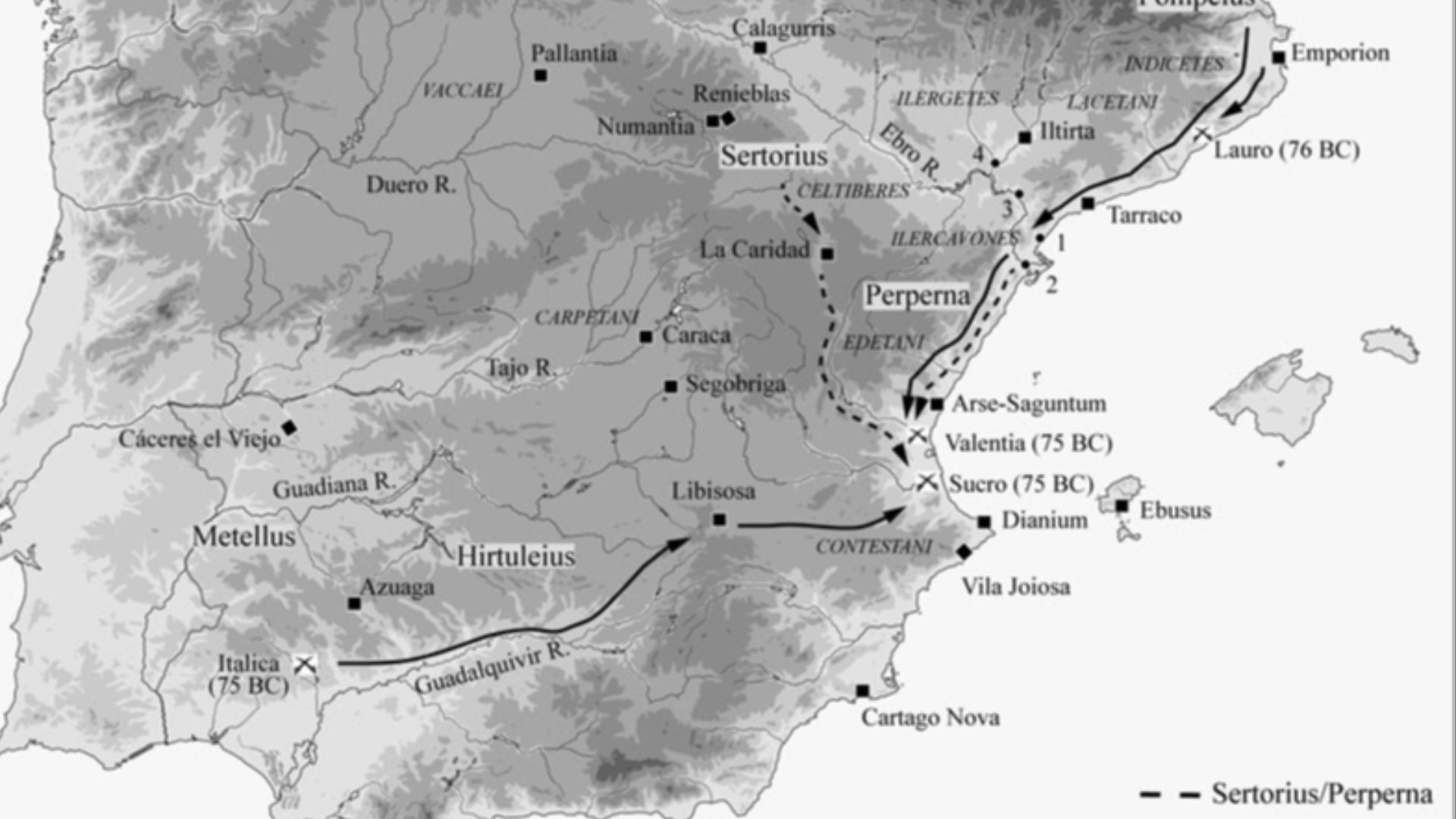 Jaume Noguera, Pau Valdes, and Eduard Ble, CC BY 4.0, Wikimedia Commons
Jaume Noguera, Pau Valdes, and Eduard Ble, CC BY 4.0, Wikimedia Commons
A Snapshot Into The People Of The Area
The Hand of Irulegi is just one artifact from the area (where archaeological digs are still being performed), but does provide an important historical snapshot into the Vascones. They were literate and their language provides a basis for the modern Basque language, which was previously thought to be a "language isolate", one with no known living relatives.
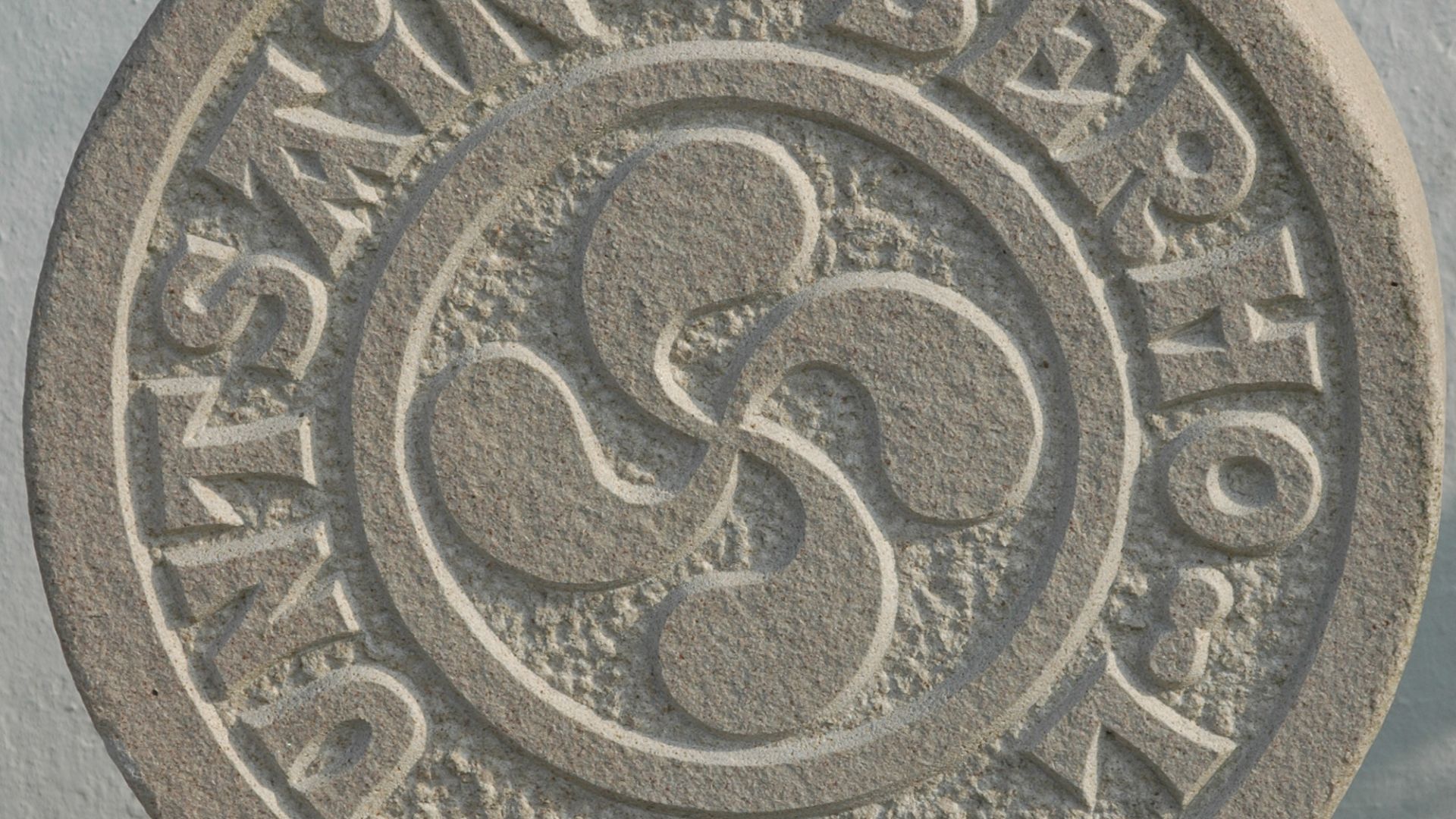 Harrieta171, CC BY-SA 3.0, Wikimedia Commons
Harrieta171, CC BY-SA 3.0, Wikimedia Commons
A Precursor To Modern Basque
Although much remains to be discovered about the lettering inscribed on the Hand of Irulegi, it's clear to the research team that the language is a precursor to the modern Basque language. This gives further credence to the theory that modern Basques are direct descendants of the Vascones.
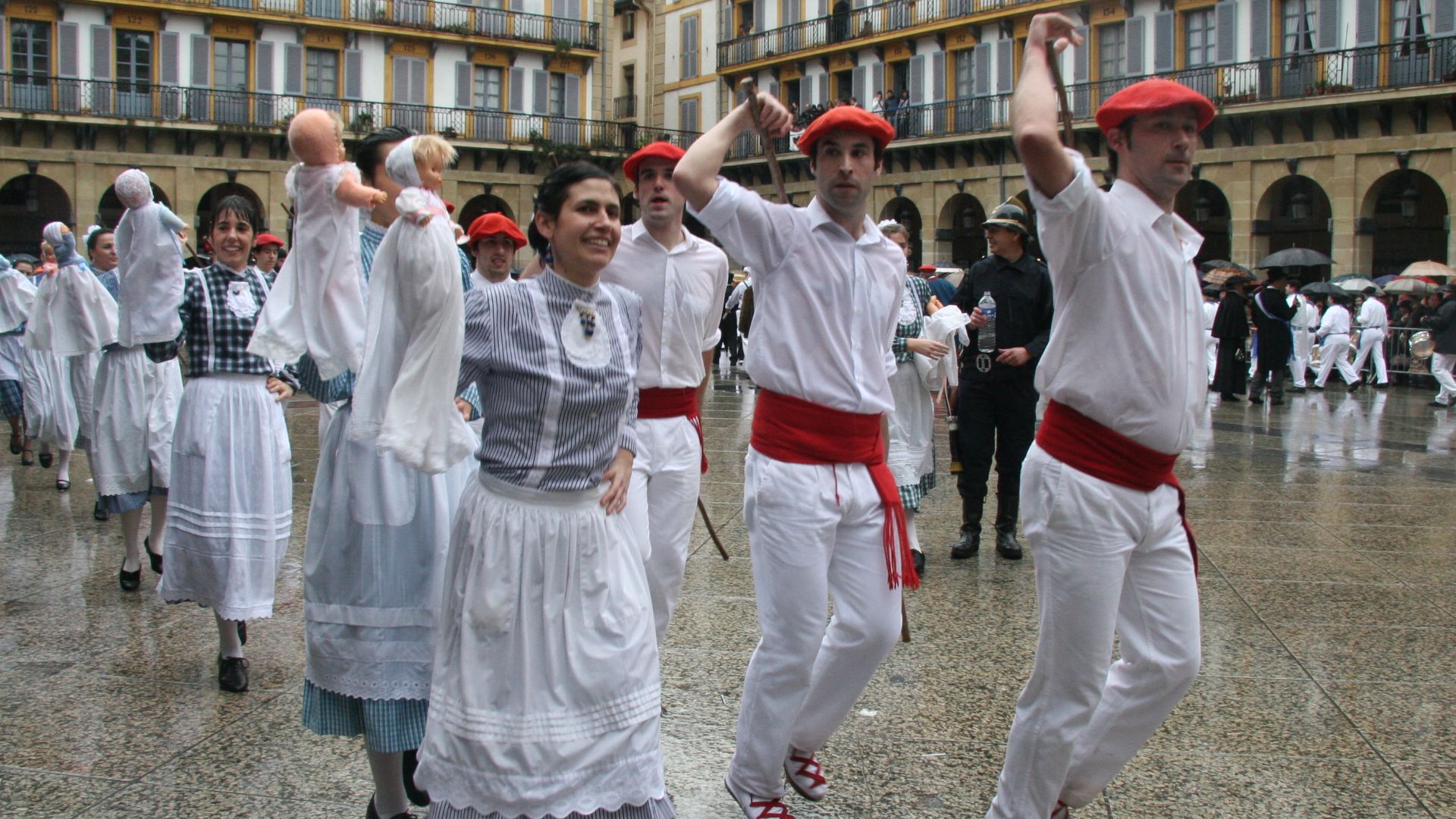 dantzan, CC BY-SA 2.0, Wikimedia Commons
dantzan, CC BY-SA 2.0, Wikimedia Commons
The Building It Was Found In
The Hand of Irulegi was unearthed in a building known on-site as "Building 6000", which contained stone plinths, an elevated part of the house made from adobe earth, and wooden posts to support the (likely) thatched roof of the home.
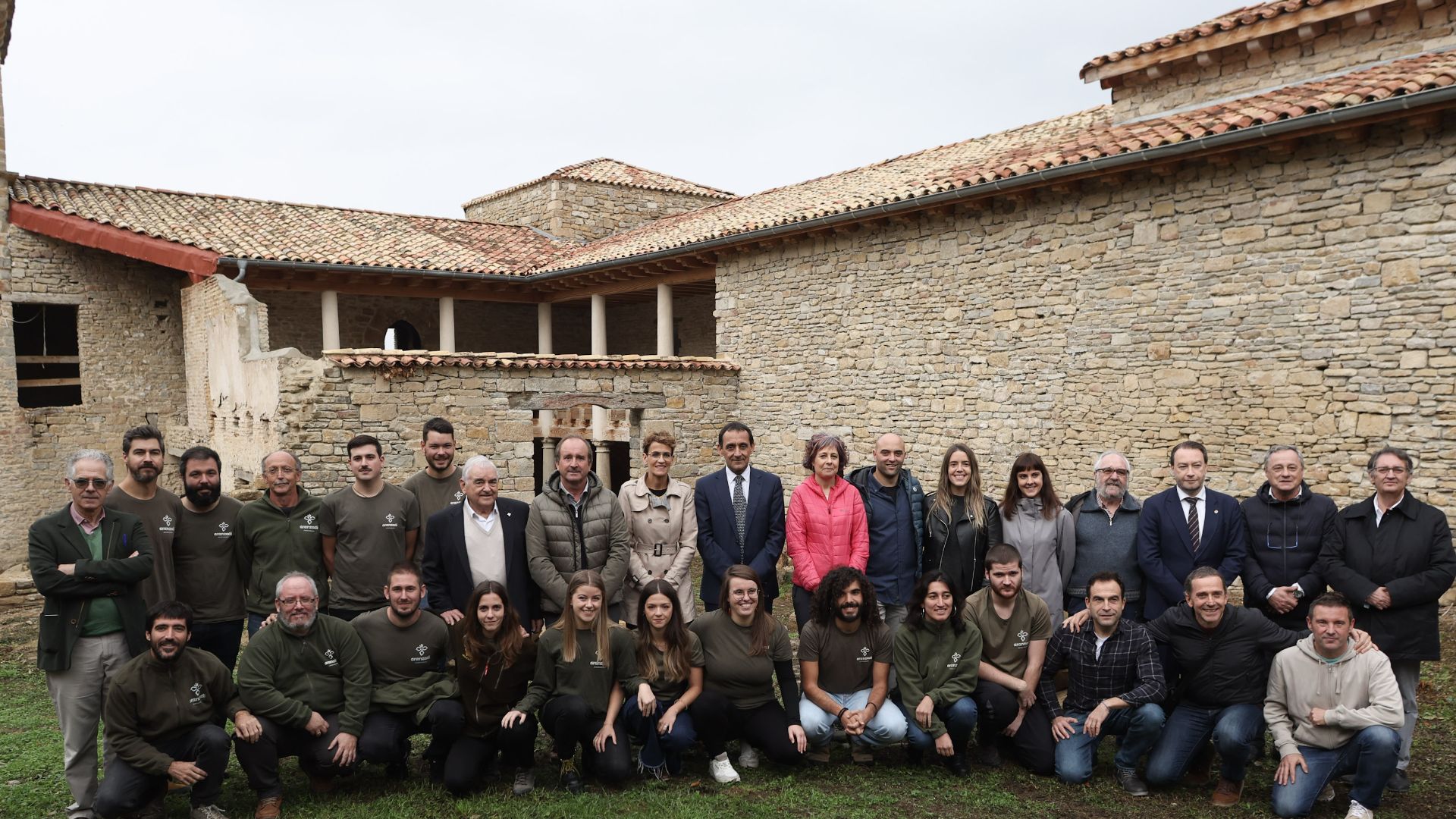 Nafarroako Gobernua | Gobierno de Navarra, CC BY-SA 3.0, Wikimedia Commons
Nafarroako Gobernua | Gobierno de Navarra, CC BY-SA 3.0, Wikimedia Commons
The Size Of The Fingers
Interestingly, the Hand of Irulegi was cast with five fingers but no thumb—and each of the hand's fingers get shorter from the index finger to the pinky, suggesting that this may have been from a time where our fingers and hands appeared physically different from how we see them today.
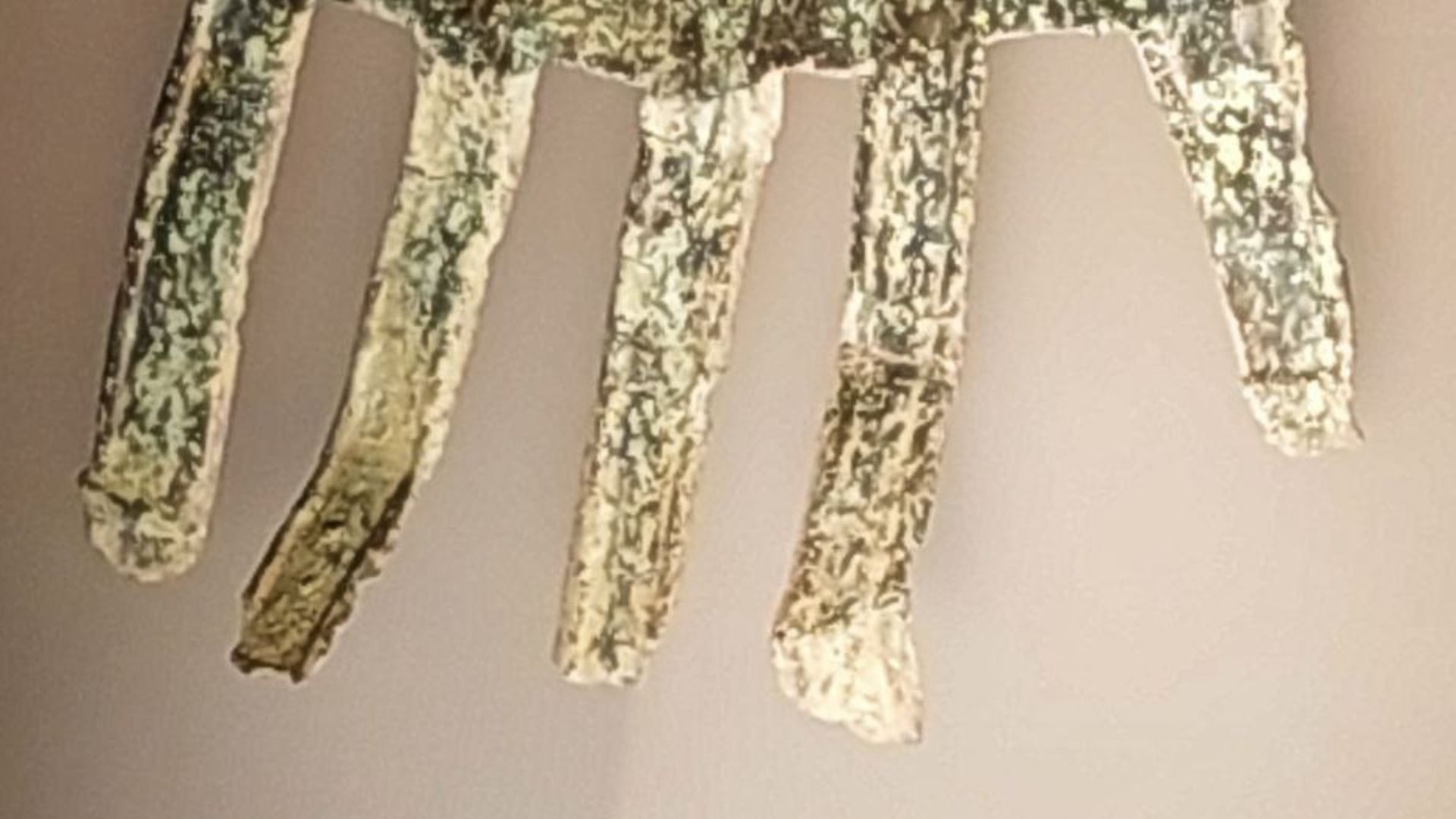 Asier Azpilikueta, CC BY-SA 4.0, Wikimedia Commons
Asier Azpilikueta, CC BY-SA 4.0, Wikimedia Commons
Other Findings Besides The Hand Of Irulegi
Further digs near the Hand of Irulegi revealed coins from the Mint of Navarre, black varnished ceramics that were likely imported to the area from the southern Italian region of Campania, bone fragments of deer, and relics from the Etruscan civilization, which existed in southern Italy as a chiefdom from about 900 BC till 27 BC.
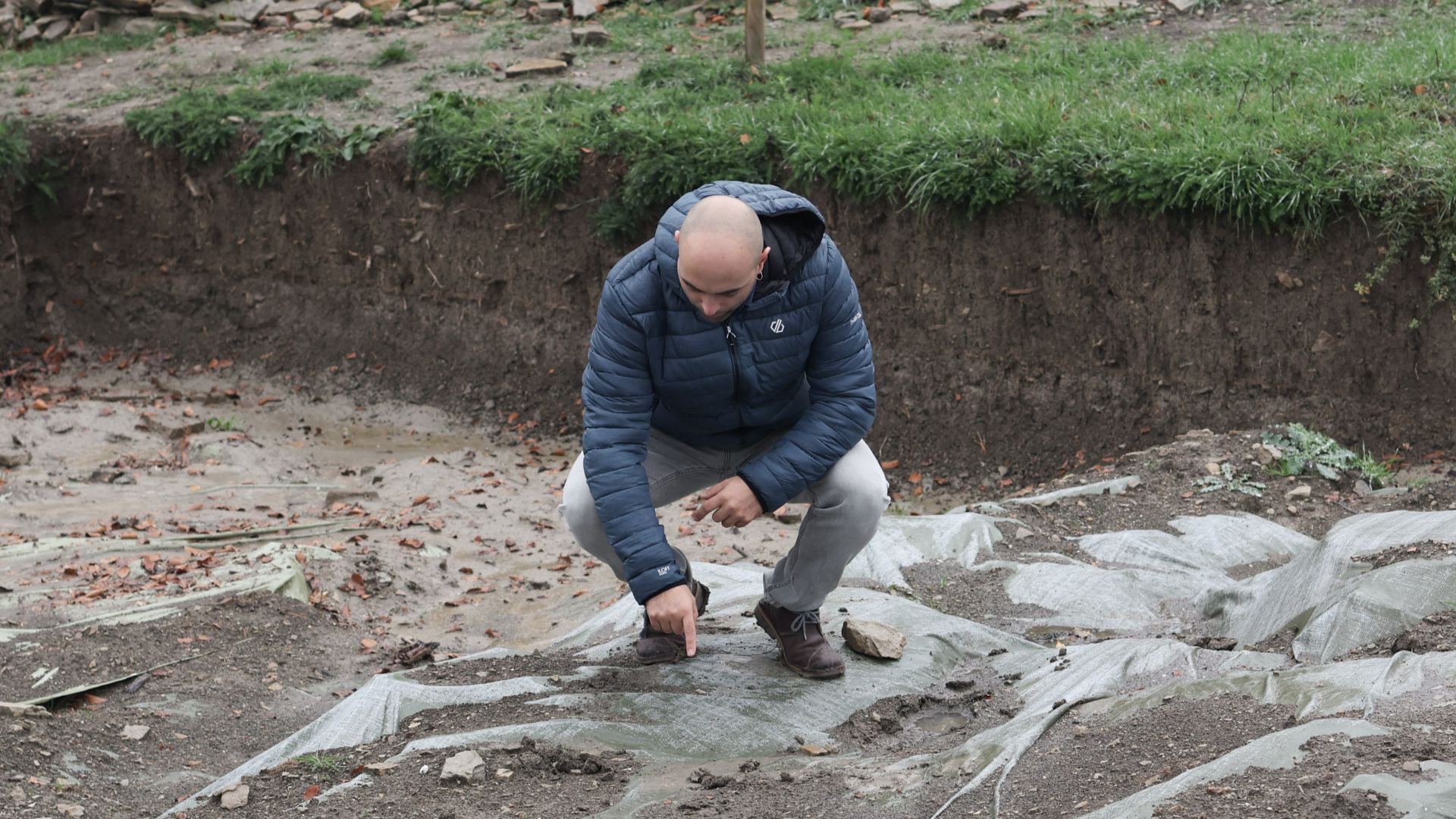 Nafarroako Gobernua | Gobierno de Navarra, CC BY-SA 3.0, Wikimedia Commons
Nafarroako Gobernua | Gobierno de Navarra, CC BY-SA 3.0, Wikimedia Commons
A Brief History Of The Basque
By far one of the most important archaeological finds in the history of the Basque peoples in Europe, the Hand of Irulegi sheds new light on the Vascones, all but confirming, thanks to the inscriptions on the hand, that they were the ancestors of Spain and France's Basque population. Let's dive a little deeper into the history of the Basque.
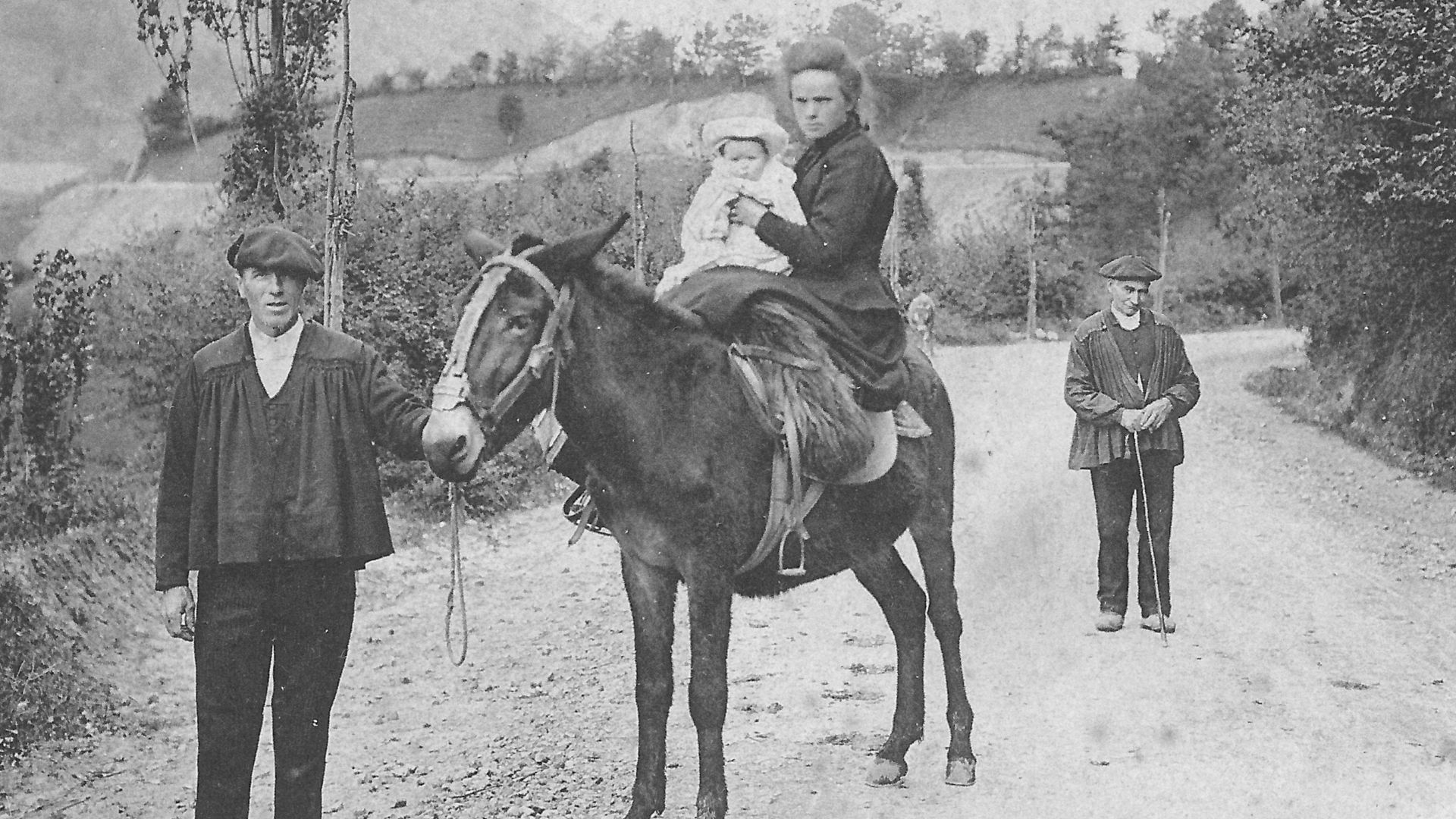 Unknown author, Wikimedia Commons
Unknown author, Wikimedia Commons
Who Are The Basque?
The Basque are a group of people who inhabit the region known as Basque Country in northern Spain and southwestern France, a semi-autonomous region of both countries that's only 125 miles wide, but home to approximately 3.1 million people.
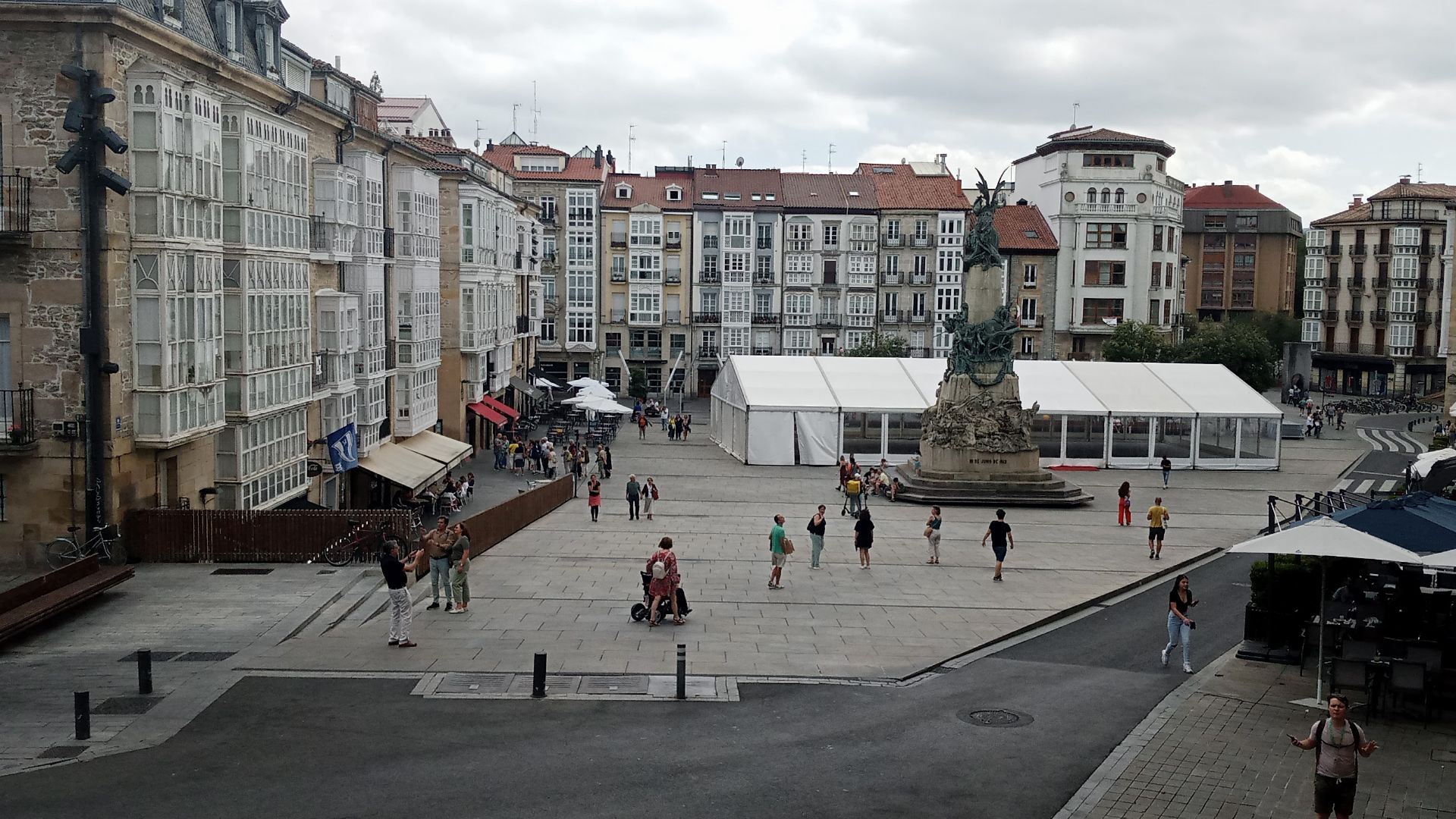 Iwuala Lucy, CC BY-SA 4.0, Wikimedia Commons
Iwuala Lucy, CC BY-SA 4.0, Wikimedia Commons
A People Without A Country
Dating back centuries, various successive Spanish and French governments allowed the Basque to live with relative self-autonomy, many centuries after Roman rule. That changed in 1839, when the Spanish government officially abolished the Basque's right to self-determination and began to rule over the Basque from Madrid with an iron fist.
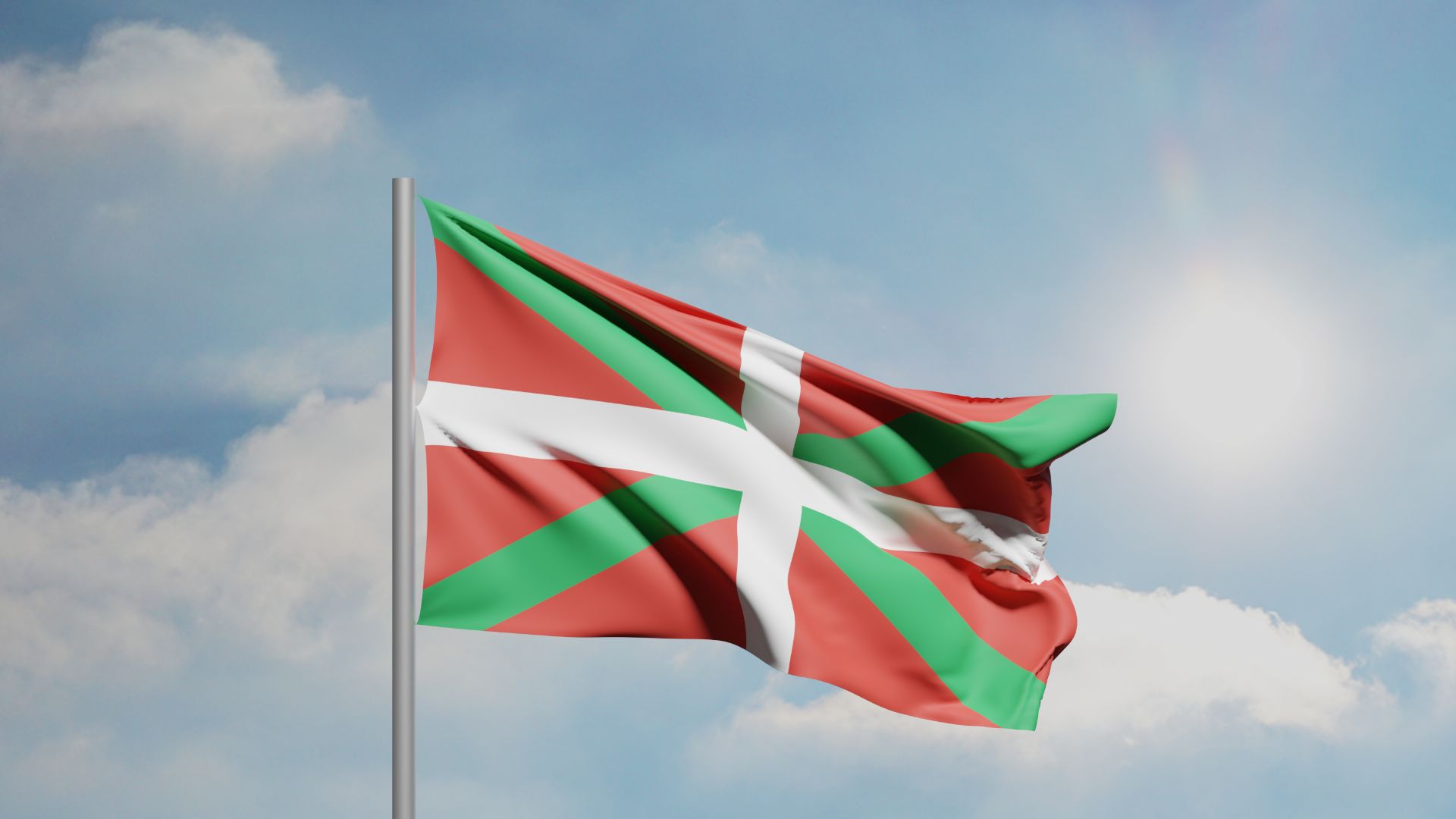 Aerra Carnicom, CC BY-SA 4.0, Wikimedia Commons
Aerra Carnicom, CC BY-SA 4.0, Wikimedia Commons
The Basque Chasing The Gold Rush
The California Gold Rush of the 1860s caused a massive migration from all over Europe to the United States, with many Basque leaving the oppressive regime in Spain for new pastures in California, Arizona, Nevada, and New Mexico. These new immigrants numbered in the thousands.
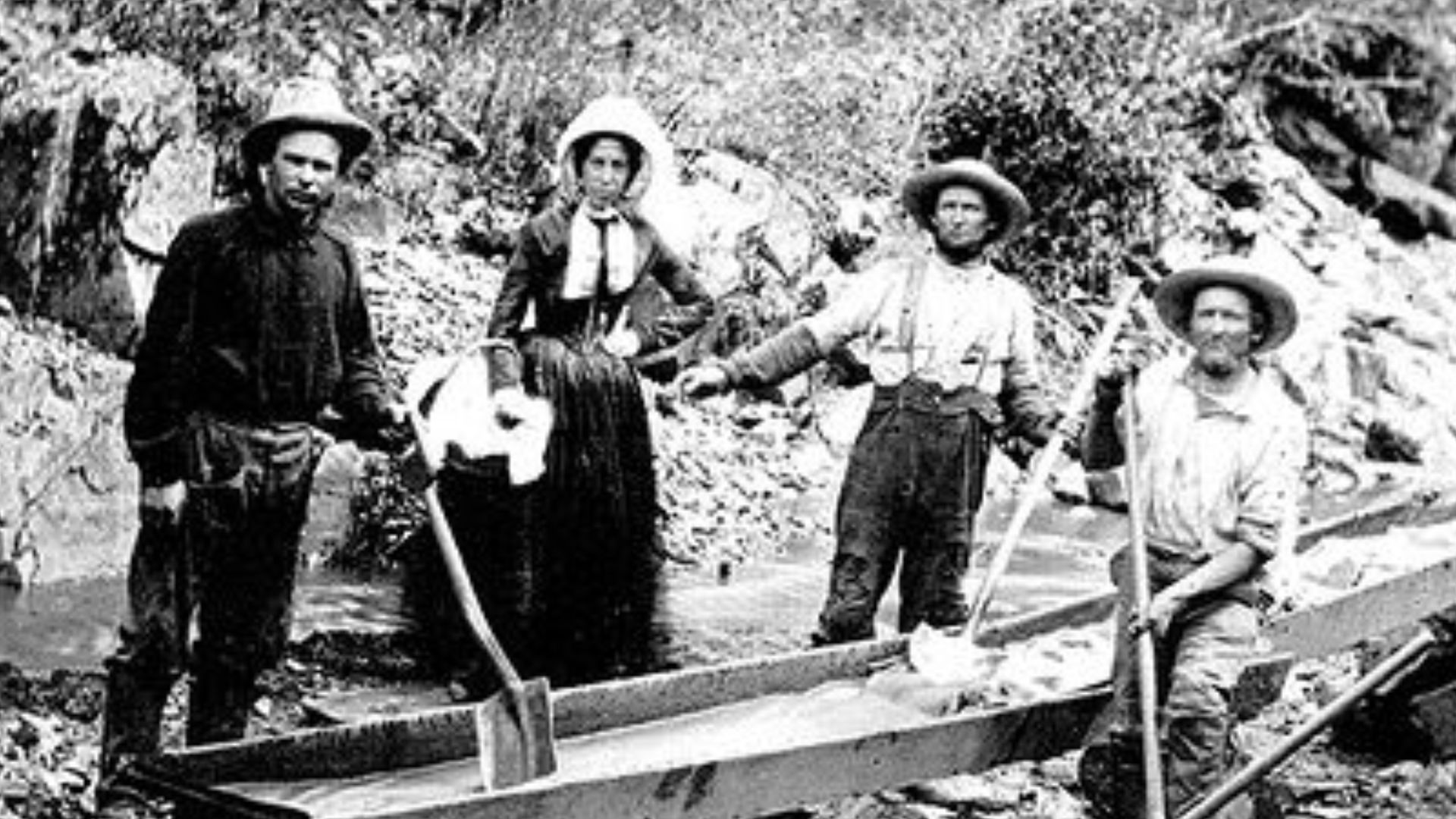 Unknown author, Wikimedia Commons
Unknown author, Wikimedia Commons
A Language Nearly Abolished
Because of the oppression faced by the Basque throughout history, their language was nearly abolished by French and Spanish governments, seeking to crush rebellious movements for self-determination. It's known as a "language isolate", which means it is unrelated to any other world languages.
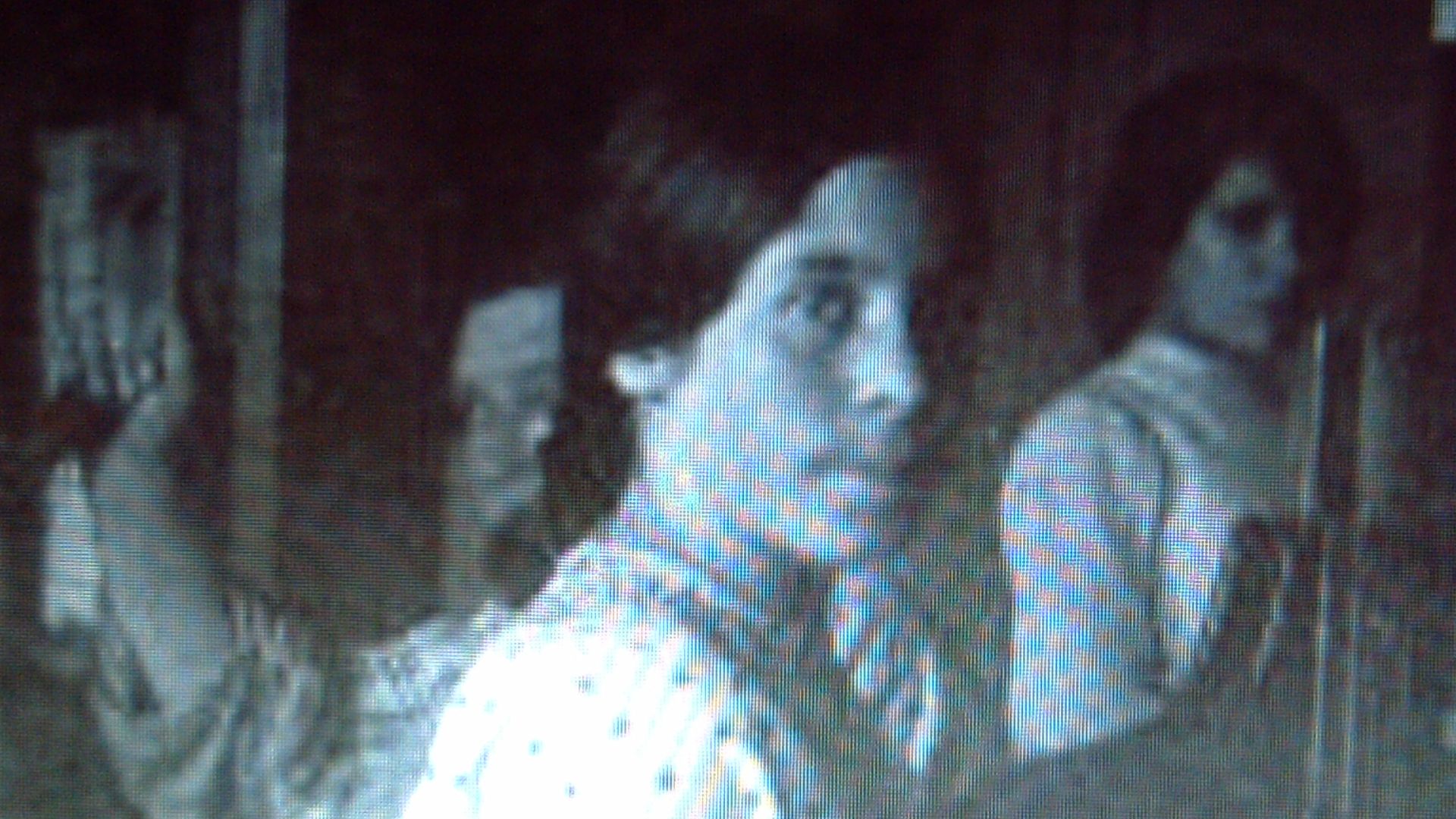 Ahtsgd, CC BY-SA 4.0, Wikimedia Commons
Ahtsgd, CC BY-SA 4.0, Wikimedia Commons
The Mystery Of The Basque Language
Scientists have been trying for centuries to trace the origins of the Basque language. Most languages spoken in Europe can be traced to Indo-European languages that share a common root, but Basque doesn't fit into this mold at all, leading some scientists to speculate as to the significance of the find entirely.
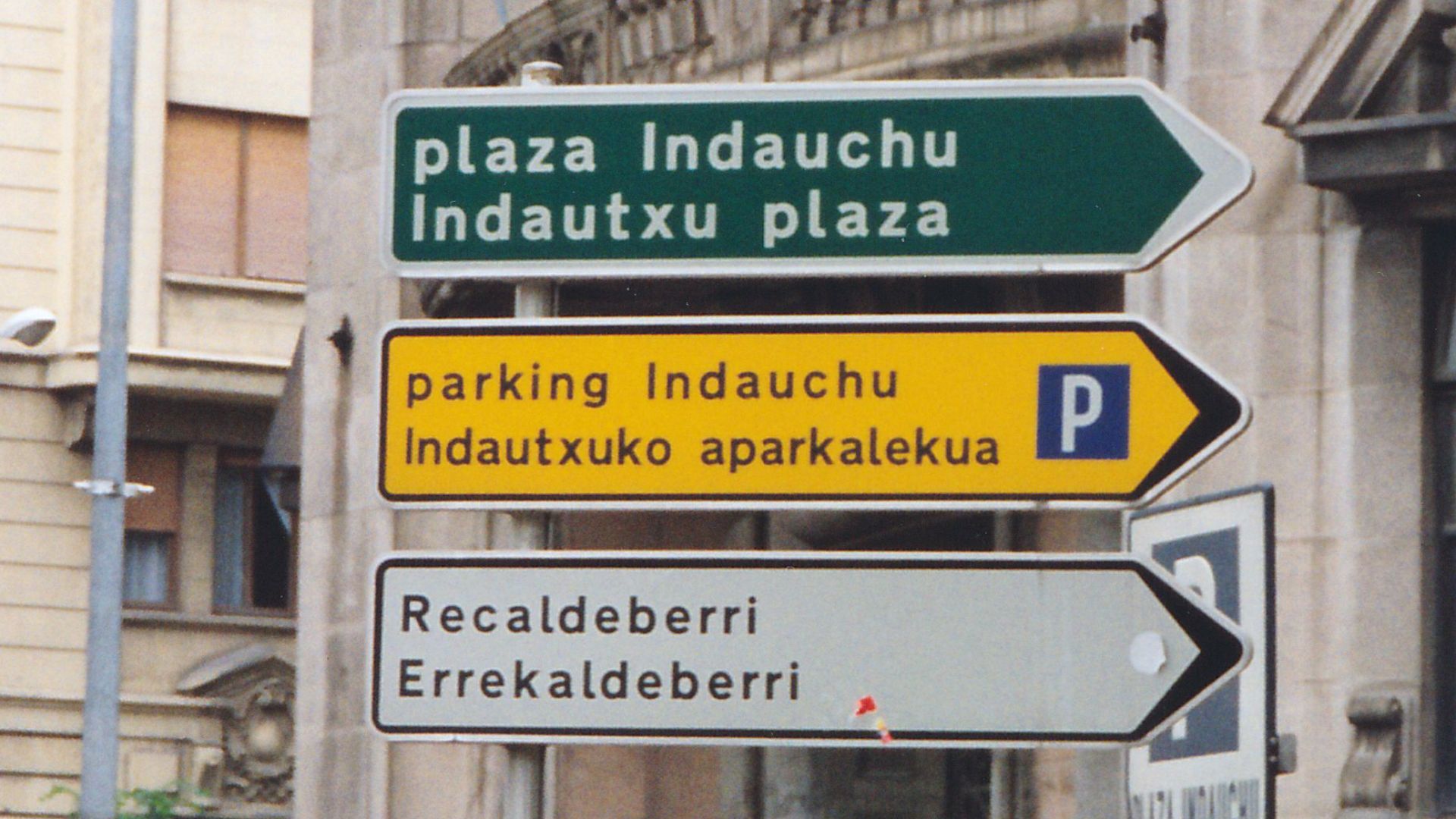 Chris Mitchell, CC BY-SA 4.0, Wikimedia Commons
Chris Mitchell, CC BY-SA 4.0, Wikimedia Commons
A 2022 Critique Emerges
In 2022, two linguists, Céline Mounole and Julen Manterola, at different European universities offered a critique of the findings. "The evidence is not enough," said Manterola. "This is partly because there are so few words on the Irulegi hand: not enough to properly compare it with known languages. We can't really relate any of the other words to historical Basque". Mounole Celine - The Polyhedron of Grammar 20190711, Basque Language Institute
Mounole Celine - The Polyhedron of Grammar 20190711, Basque Language Institute
The First Of Its Kind
While the Vascones culture had been previously featured in a few coins from the 1st century, the written word of the Vascones on the Hand of Irulegi is the first of its kind—the first time that a precursor to the Basque language had been discovered and the first (and most detailed) account of the Vascones ability to read and write.
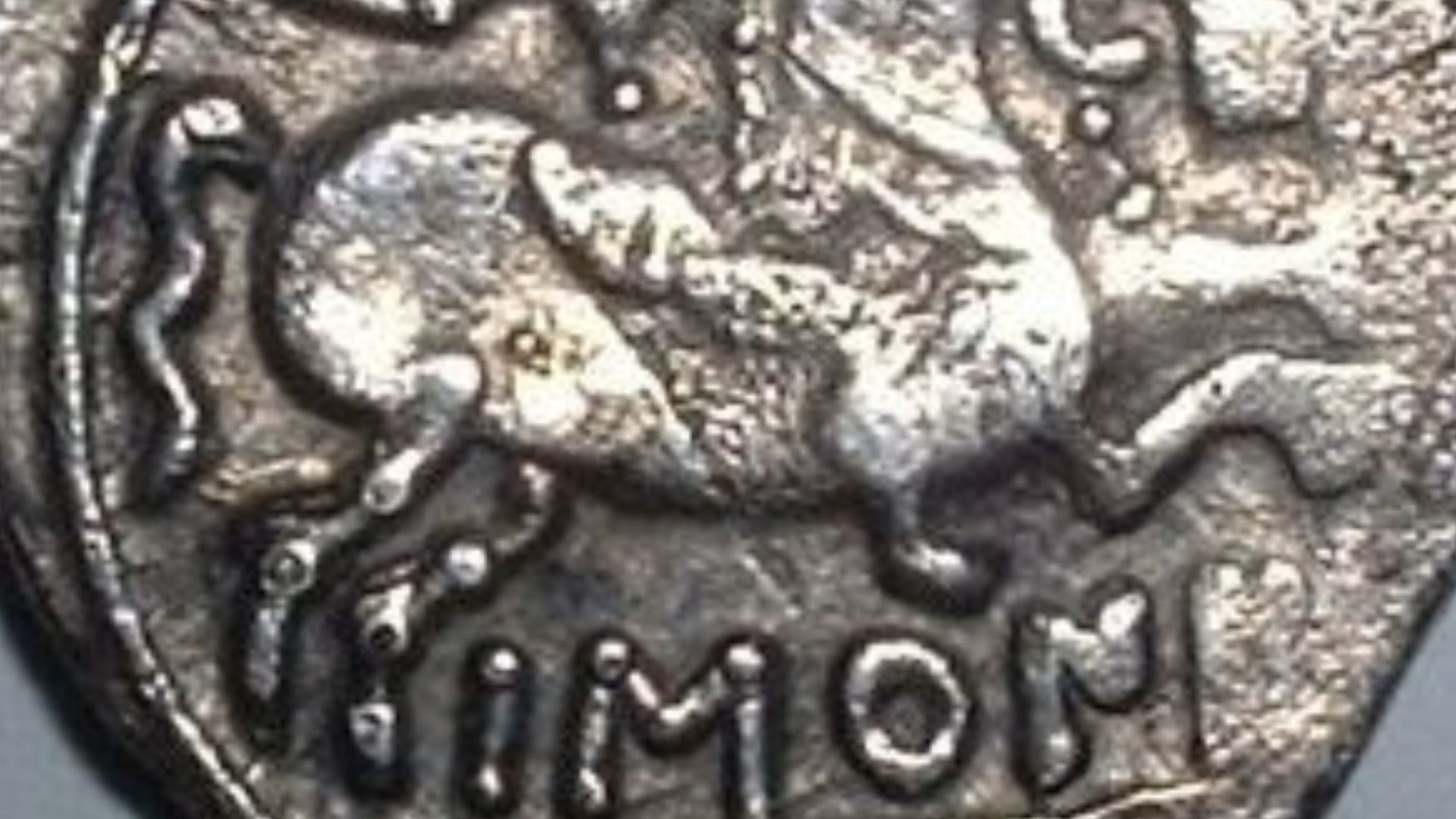 Aepef, CC BY-SA 3.0, Wikimedia Commons
Aepef, CC BY-SA 3.0, Wikimedia Commons
Who Carved The Hand Of Irulegi?
The identity of who carved the Hand of Irulegi remains a mystery, but the how has been resolved thanks to research by Manuel Gómez-Moreno, a Spanish epigrapher who was able to decipher pre-Roman writings in the mid-20th century, without using a Rosetta Stone. It appears that the Hand of Irulegi was etched using sgraffito and later adorned with stipples. Which begs the question: Did one or two people work on the inscription?
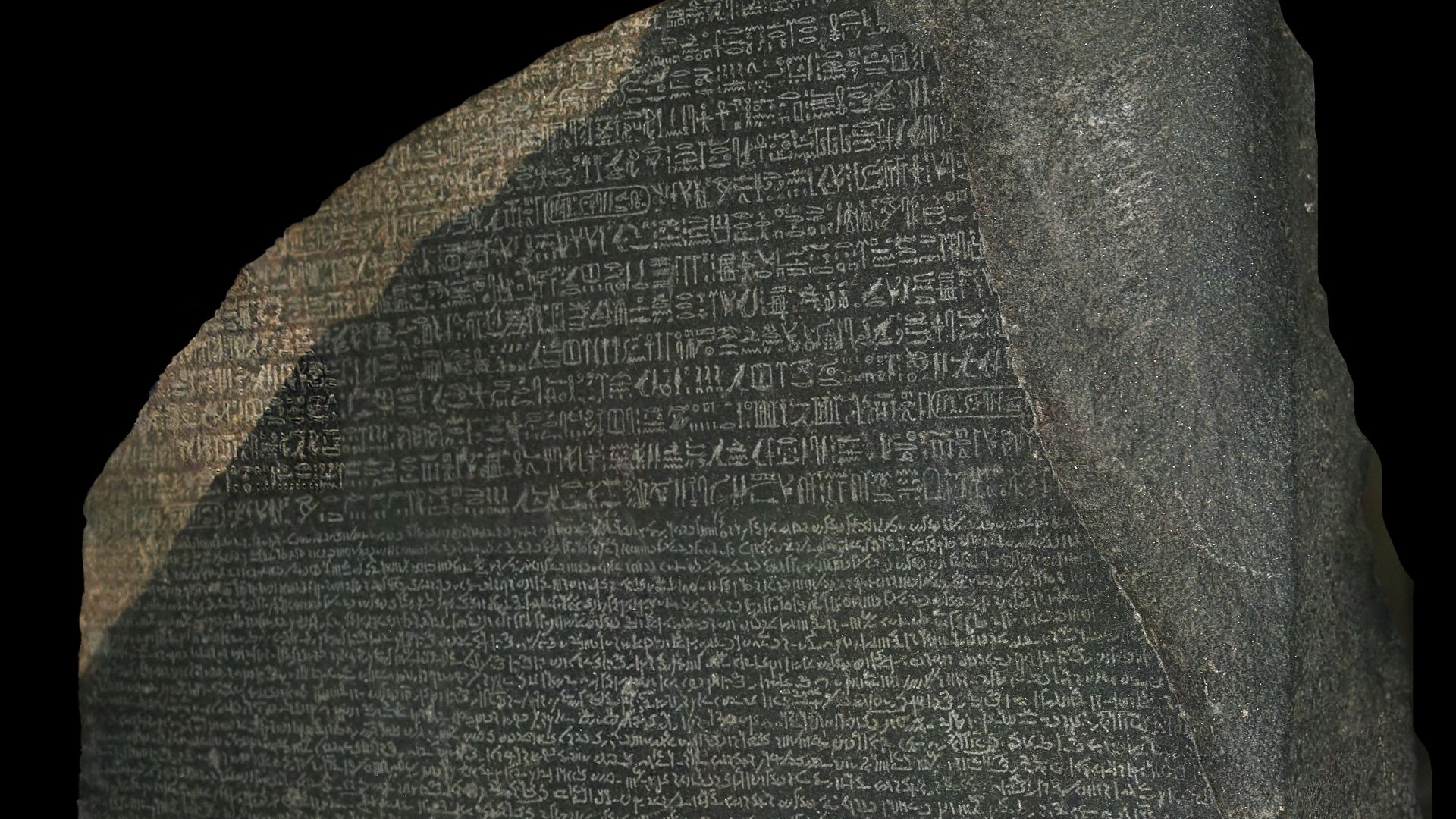 Hans Hillewaert, Wikimedia Commons
Hans Hillewaert, Wikimedia Commons
Double-Procedure Of Sgraffito & Stippling "Extraordinarily Rare"
According to Professors Javier Velaza and Joaquín Gorrochategui at Aran of tzadi Science Society, the double procedure of sgraffito and stippling an artifact is "extraordinarily rare," and they can point to only one other instance of the engraving techniques used in that way: on a silver bowl from centuries ago, although whether that artifact has a relationship to the Hand of Irelugi is unknown.
 Nuria Gonzalez (UPV/EHU), CC BY-SA 4.0, Wikimedia Commons
Nuria Gonzalez (UPV/EHU), CC BY-SA 4.0, Wikimedia Commons
The Letter T: A Unique Linguistic Characteristic
The appearance of the words oTiŕtan·eseakaŕi suggests that they were definitely carved by Vascones in a proto-Basque language. Exactly what the "T" translates to is something of a mystery, but linguistic specialists at the University of the Basque Country say that the T-shaped sign confirms the presence of Basque script.
 The Hand of Irulegi: Oldest known text in ancient Basque discovered in Spain, euronews
The Hand of Irulegi: Oldest known text in ancient Basque discovered in Spain, euronews
What Does The Hand Of Irulegi Offer To Basque History & The Future?
The significance of the Hand of Irulegi may mean that ethnographers and linguists are able to trace the origins of the Basque language and peoples to the Vascones, offering a key insight into where the Basque came from and further staking modern Basque claims to their culture, language, and place in modern Spanish society.
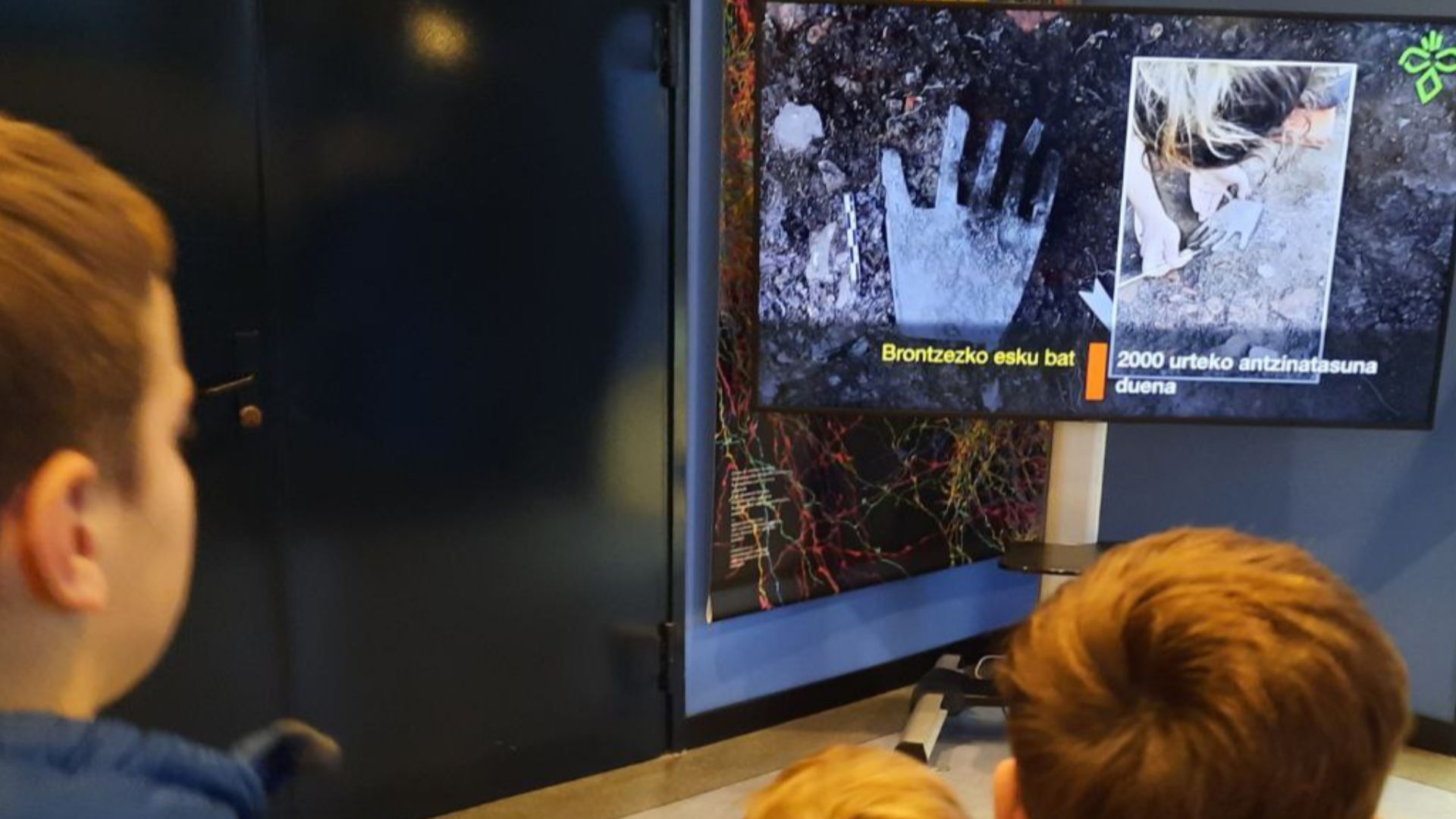 Asier Azpilikueta, CC BY-SA 4.0, Wikimedia Commons
Asier Azpilikueta, CC BY-SA 4.0, Wikimedia Commons
You May Also Like:

